The post Q&A With Dance Travel Show Host Brittany Pierce Of Rhythm Abroad appeared first on The Expeditioner Travel Site.
]]>I may not be a good dancer (scratch that: I’m a terrible dancer), but I can at least appreciate the art form, as well as the role it plays in the way cultures express themselves and have identified themselves throughout the years. Of course, those that can actually dance are probably the best people to explore this. Enter Brittany Pierce, host of the new dance-themed travel show Rhythm Abroad whom I recently had the opportunity to speak with (she’s actually both host and Executive Producer) and ask a few questions.
Available on pubic television stations throughout the U.S., each episode features Brittany in such locations as Tahiti, Spain, Alberta and Switzerland, hitting the dance floor (or, you know, outside somewhere) with the locals, and seeking to explore each culture through traditional dance and native customs of people around the world. Brittany also heads off the dance floor in each episode to chat with local musicians and hang with the locals as they savor the food and enjoy the thrills of a unique activity.
“What makes this show so relatable is it encourages people to dive right in and participate in a culture instead of observing from afar,” says Pierce. “I’m not a professional dancer, but I love a great beat and that’s all one needs: to feel the beat.”
Brittany is a veteran in front of the television camera. Besides being a child actor, in college she studied journalism and worked in TV news before following her real passion: travel.
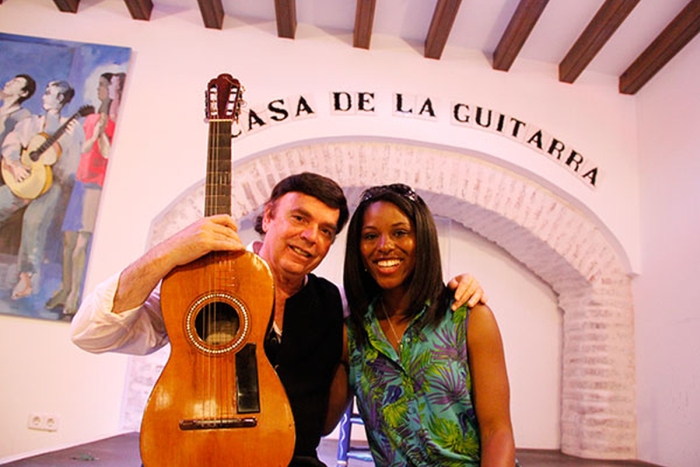
1) Why explore travel through the lens of dance versus something like food or music? What makes dance unique to each culture, or is it all part of a larger package of a destination’s culture?
It all started when I took my first international trip to Nicaragua. Along with a couple of other travel mates, we decided to check out a local club. We were the only Americans in the club. A guy asked me to dance in his broken English and I accepted in my broken Spanish. It was there on the dance floor that I truly felt like I had been invited to share in the Nicaraguan culture.
Even without being able to speak to each other in the same language, we were still able to connect with each other even if just for a few minutes out on the dance floor. Dance and music are the universal languages. They can help us to understand and participate in a culture without the need for a common language.
2) What were you doing before this? Do you have a dance background?
I worked in television news as a producer and reporter. I also took to teaching for awhile, including high school and elementary school. However, travel always tickled my heart the most, so I set out to marry my love of television production and travel together, which led to the birth of Rhythm Abroad with Brittany Pierce. I guess in some ways I am still able to educate or introduce people to new experiences and world cultures with Rhythm Abroad.
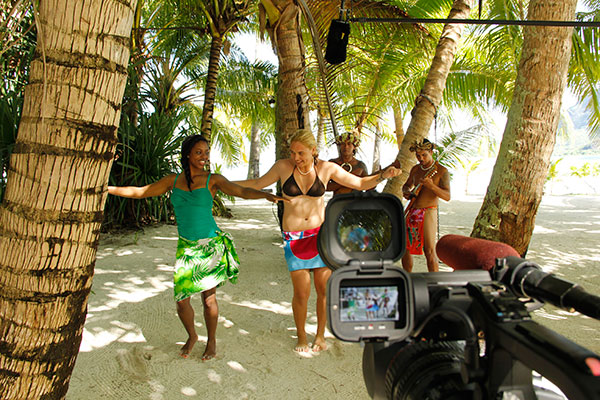
3) How can I watch the show and keep updated with new episodes?
You can go to Rhythmabroad.com/stations for a list of PBS and other public television stations that are airing Rhythm Abroad. You can also do a simple title search on your television to see if Rhythm Abroad is carried on any station offered by your cable provider. If it’s not carried by your local PBS station, contact them and let them know that you would like to see it added to their programming schedule!
4) Now that you’ve visited a number of places, was there a particular culture or destination that was your favorite in terms of dance?
I would have to say Spain. There is so much to learn about Flamenco and it is an art that can’t be learned in one visit. I wish I would have had more time to learn more moves. It’s such a powerful and passionate dance. Even just being a spectator of a really good Flamenco performance or show is worth the visit to Sevilla.
5) What’s next for you? Do you plan on pushing the show to new formats or expanding the brand out to new areas?
Next steps include creating a really engaged Rhythm Abroad community and working on bringing viewers a great Season 2.

/
 Matt Stabile is the founder and Editor-in-Chief of TheExpeditioner.com. You can read his writings, watch his travel videos, purchase the book he co-edited or contact him via email at any time at TheExpeditioner.com.
Matt Stabile is the founder and Editor-in-Chief of TheExpeditioner.com. You can read his writings, watch his travel videos, purchase the book he co-edited or contact him via email at any time at TheExpeditioner.com.
The post Q&A With Dance Travel Show Host Brittany Pierce Of Rhythm Abroad appeared first on The Expeditioner Travel Site.
]]>The post 5 Questions For The Guy That Traveled To 26 Countries To Make A Wedding Proposal Video appeared first on The Expeditioner Travel Site.
]]>If you’ve used any type of social media the last few days or so, chances are you’ve come across the story of Jack Hyer, the Montana man that put together a 26-country wedding proposal, 4 years in the making (see above), featuring him trouncing around the world, lip-syncing to The Proclaimers’ “I’m Gonna Be (500 Miles)”.
In fact, Hyer’s story has been mentioned everywhere from People, Huffington Post and The Telegraph, and has likely caused many a very uncomfortable dinner for men around the world when confronted by their fiancées about the planning that went into their own blasé proposals.
It all began back on Sept 30, 2010, when University of Montana students Jack Hyer and Rebecca Strellnauer went on their first date. Afterwards, Hyer was so convinced they were going to get married, he wrote in his journal, “I’m going to marry this girl eventually.” He then set about traveling the world, putting together this elaborate proposal video, featuring countries such as Turkey, China and Cambodia.
Fast forward four years, and upon their recent graduation, Hyer queued up the video he had made and showed Strellnauer and their friends at a graduation party (he told everyone they would be watching a “graduation slideshow”). Then, when the video concluded, he came clean with his true intention.
“I’ve been on many adventures. I’ve traveled on elephant, on camelback, hiked to the lowest point on the earth and I’ve gotten to see some of the highest, but the best adventure I’ve had is loving Becca.” He got down on one knee and popped the question. (She said yes, obviously.)
I recently spoke with Hyer by email, and he agreed to answer a few questions for TheExpeditioner readers while doubtlessly fielding a number of other similar requests.
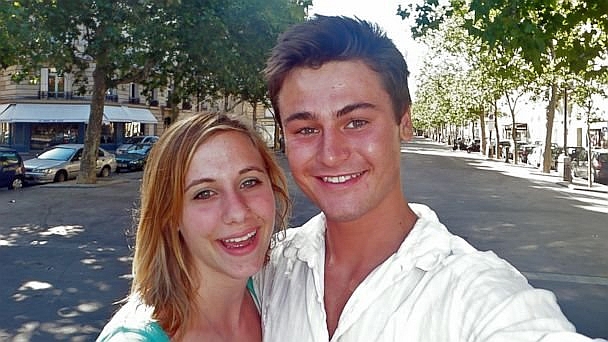
1) You traveled to 26 different countries to make this video. Were you traveling just for fun and decided this would be a fun way to put together a proposal, or were you traveling for another purpose? Tell me about your motivation.
I was traveling for many reasons. This proposal was actually a side project along the way. My first trip was from Israel to London, mainly to learn about the history of the region and meet up with a high school friend. The second trip was to Asia where I traveled from Bangkok to Beijing. My sister graduated college and was going on a graduation trip and invited me.
Lastly, my trip to Africa was a volunteer trip to offer help at an orphanage, mainly teaching English and math. After Asia, I felt I should start traveling with the purpose of giving back. Although it took four years to make, it was actually three separate, seven-week trips.
2) Was it difficult shooting the video? It looks like you were employing the help of lots of strangers. Can you tell me about the process of shooting?
Most of the shooting was done by my sister while we were in Asia and by a high school friend while we were in the Middle East. Occasionally, I was forced to shoot it myself or to ask for help from strangers. I definitely weirded quite a few people out while singing random parts of a song on camera . . .
3) What was Rebecca’s reaction when she saw the video? Be honest, was she a little freaked out that this was four years in the process, or did she simply think you were the most romantic person on earth?
Becca was thrilled, honestly. We have been friends since childhood and knew each other very well when we started dating. After our first date, our relationship became very serious since we already knew just about everything about each other — we basically skipped the “get to know each other” phase.
When she saw the video she starting bawling and loved it. She was actually in a few parts of it; I had been forced to silently lip-sync so she wouldn’t know what I was doing.
4) I take it travel is a big part of your life, do you and Rebecca plan on traveling a lot together in the future? Do you have a trip planned soon with her (namely, your honeymoon)?
Becca and I want to spend as much time traveling as possible. I’m currently looking for international business positions that would allow us to move abroad permanently. We actually were offered a free trip to Belize because of the video, so that will be our next trip. Following that, we have plans to hike the Inca trail in Peru.
5) At last check, the video had over 3 million views on YouTube alone. Life must have gotten quite crazy since it went viral.
Since the video went viral things did get a little crazy. The phone was buzzing off the hook, emails were pouring in and wedding services were offering free stuff for publicity. (Needless to say, I think we’re going to have a free photographer for the wedding.) I’ve taken a few interviews so far and have been contacted by a few talk shows and the producers of The Amazing Race.
It’s been pretty exciting seeing how things have turned out, especially since I simply posted this for my friends and family to see, unaware of the consequences.

/
 Matt Stabile is the founder and Editor-in-Chief of TheExpeditioner.com. You can read his writings, watch his travel videos, purchase the book he co-edited or contact him via email at any time at TheExpeditioner.com.
Matt Stabile is the founder and Editor-in-Chief of TheExpeditioner.com. You can read his writings, watch his travel videos, purchase the book he co-edited or contact him via email at any time at TheExpeditioner.com.
The post 5 Questions For The Guy That Traveled To 26 Countries To Make A Wedding Proposal Video appeared first on The Expeditioner Travel Site.
]]>The post What’s It Like To Write For Lonely Planet? 10 Questions For A Lonely Planet Author appeared first on The Expeditioner Travel Site.
]]>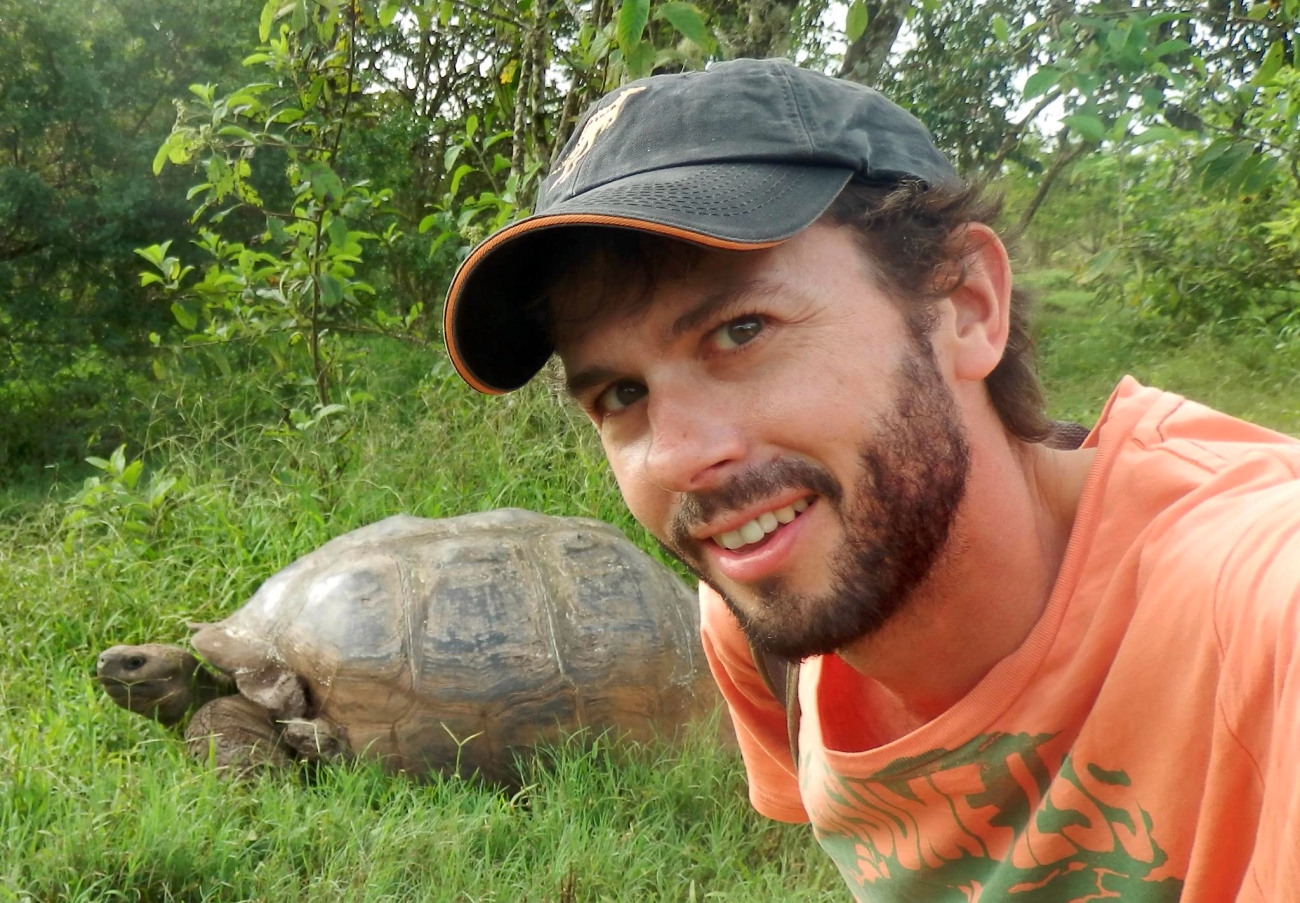
I met Lonely Planet author and all-round model traveler Regis St. Louis earlier this year during a trip to Quebec City, where I learned that he has enviously been living his life traveling the world and working as a full-time author for Lonely Planet, authoring and co-authoring some of their biggest titles including Lonely Planet Brazil, Lonely Planet Portugal, Lonely Planet Rio de Janeiro, Lonely Planet Barcelona, Lonely Planet Papua New Guinea & Solomon Islands, Lonely Planet South America on a Shoestring, Lonely Planet Montreal & Quebec City and Lonely Planet New York City . . . phew.
Currently based in Brooklyn, New York, Regis divides his time between his young family and writing for Lonely Planet. But back in the halcyon days of the ’90s (1999 to be exact), a young Regis St. Louis took a life-altering trip to the Andes, where upon returning home to the U.S., he promptly sold all of his belongings and set off on a classic journey across the whole of Latin America. Since then, he’s traveled extensively on six continents, visiting everywhere from the rainforests of the Amazon to the snowy heights of the Caucasus.
Of course, during the entire time we were together, I peppered him with a myriad of annoying questions about what it was like to work for Lonely Planet. In an effort to supplement my own short memory span, as well as to share with the world his responses, I decided to follow up with some written questions, including questions about his view on the future of guidebooks in general, and how he influenced Anthony Bourdain’s trip to Rio.
1) How many and which guidebooks have you worked on for Lonely Planet?
I’ve been writing for Lonely Planet pretty much full-time for the last 11 years, so I’ve had the chance to cover a wide range of countries over the years, including Spain, Brazil, Russia, Australia, Vietnam, Japan, Nicaragua and Estonia among other places. In all I’ve contributed to around 50 guidebooks or so. I tend to work on a fair number of city guides. My favorite places of the moment are Barcelona, Rio de Janeiro and Lisbon.
2) How did you become a Lonely Planet author given that it’s one of the best jobs in the world? I imagine it’s not exactly an easy job to get?
I’ve always loved languages (I studied Russian in university and later learned French, Spanish and Portuguese), and I had always aspired to make my living as a writer, but I really didn’t have a career plan after college. I ended up moving out West and working odd jobs just to save enough money to go traveling. After a big trip around Latin America, I started writing essays about travel and publishing them in obscure online publications.
Then by chance I saw that Lonely Planet was recruiting for new writers — this was back in 2002. So I sent them some of my work and was invited into the pool of authors (around 350 or so authors at the time). It was a bit of luck really. They happened to be looking for folks with Latin American experience who could speak Spanish and perhaps Portuguese. This didn’t mean much until I received my first commission a few months later. I was invited to cover part of Brazil for the South America on a Shoestring guide. After that, I continued to develop relationships with different editors and managed to get assignments covering lots of places.
3) What’s the best part about being a Lonely Planet guidebook author? What’s the worst part?
I love the diverse skills that are required for this job. You need language skills, research skills (sleuthing out the great new restaurants, bars and hidden attractions) and an outgoing personality to talk to many different types of people and gain insight into the culture. The deeper you go, the richer your experience will be and the more able you will be to share that with readers.
On the other hand, you also need to be able to rabbit yourself away for weeks on end to write the damn thing after the trip is over. You might have several hundreds of pages of text to update and you won’t have very much time to do it. During these tight deadlines, you can forget about having a social life or even leaving the house for days on end. Spending two months chained to a desk can be a very isolating experience.
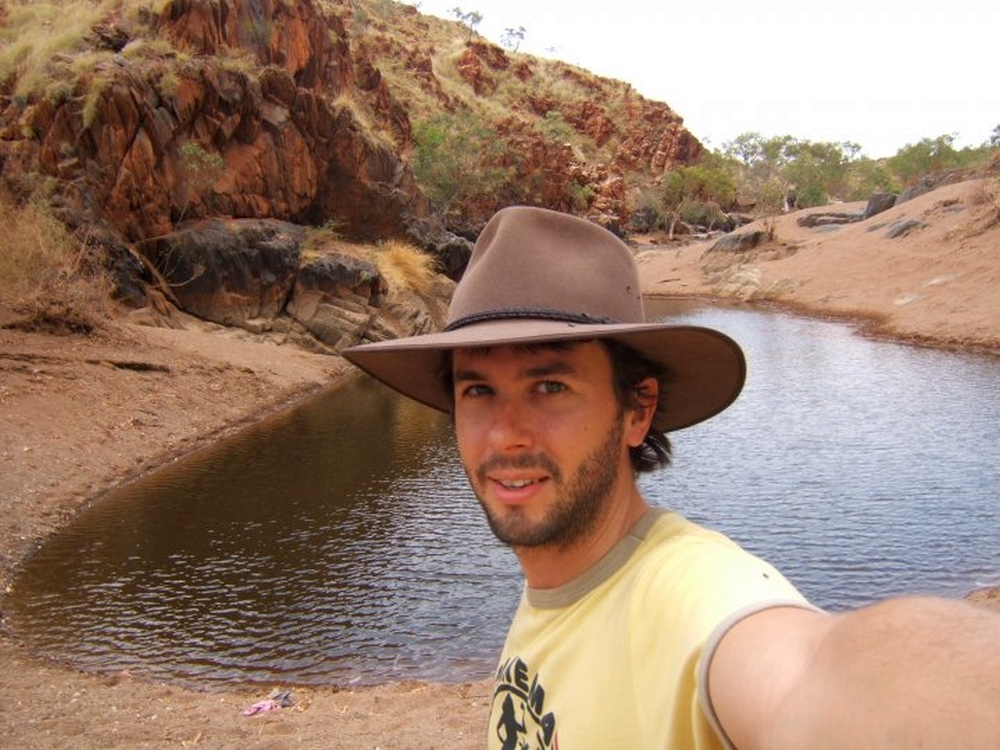
4) Given the amount of travel you’ve done, I imagine you’d seen and done it all. If you could name one, what was your best experience while traveling that encapsulated everything you love about it?
I certainly haven’t seen it all. In fact, the more I travel, the more I realize how vast and unknowable this great world is. I think that’s part of the appeal of travel really: the mystery of what lies out there, and going out and discovering.
Speaking of which, I was fortunate enough to work on the last Papua New Guinea guide. One of my most memorable experiences was toward the end of my trip when I was trying to go by boat between two regions in Oro Province (I was running out of time and trying to get to Tufi). I arrived at the dock in Oro Bay and it seemed pretty hopeless. There were no boats and lots of people waiting around. (In Papua New Guinea, you do a lot of waiting around for public transport, and sometimes you get stranded in the middle of nowhere.)
So, I made friends with a man who helped get me on his own village boat when it finally arrived. But it was getting dark, and it was clear that Tufi was much farther than I had imagined, so I wouldn’t be getting there that night. We had a few scary breakdowns on rough seas. These were little “banana boats” mind you — long canoes with outboard motors that got tossed about like toy boats on the dangerous South Pacific swells. In fact, the previous author of my region had actually capsized in rough seas, lost his laptop, camera, notes and all his belongings, but he survived, swimming to shore along with his fellow passengers, but I digress . . .
So we finally made it across the bay to calmer waters and made stops at tiny villages to drop off the passengers along the way. The boatman said I could stay with his brother’s family in Tumari, then the following day, they’d take me on to Tufi. It turned out to be a magical stay. Tumari is a sweet little village, and they rarely see foreigners there. I got such a warm welcome. The boatman’s family cooked a lovely meal for me, provided a bed and we sat on the porch of their little bungalow and watched the stars appear above the palms, gentle waves lapping at the shore of this remote corner of the world.
The next morning, one of the village kids took me around, showed me the thatched-roof open-sided building where he went to school, and introduced me to everyone in the village. I heard lots of stories from folks who wanted to share a bit of their lives with me. I was quite moved at how kind and open everyone was. Later that day, the boatmen took me around to Tufi — which is a spectacular setting of rainforest lining these long fjord-like rias — but I was already missing Tumari.
I suppose some of my most memorable experiences have been when unexpected things happen — when things go wrong — and then you are open to these extraordinary experiences.
5) What misconceptions do you think people have about what it’s like to be a guidebook writer?
Most people don’t realize the grind of the daily routine of guidebook writing. On the road, I’m up early, planning my route for the day, then visit 30 or 40 places in a day — hotels, restaurants, tour outfits, bus depots, etc . . . Looking at hotel room after hotel room and studying restaurant menus quickly becomes utterly mind-numbing. Then, back home, you become a hermit. It’s easy to get burned out.
Travelers on the road tell me I’ve got the best job in the world, but I often envy them. They arrive in a destination, get to decide how they’ll spend their days and have absolute freedom to lie on the beach, climb a mountain or just spend their day however they wish. I have quite a packed schedule covering all the places of interest in the guide, plus researching new spots, so I don’t have much time for beach days or leisurely side trips. Of course, it’s when they go back to the day job at the office that I no longer want to trade places.
6) It’s important for guidebooks to be unique and list ideas, restaurants and other attractions that differentiate them from other guidebooks. How do you go about discovering places an ordinary traveler would never find?
Talking to locals is key — hence language skills are essential when writing a good guidebook to a foreign country. Thumbing through local publications to see what other folks are covering, whether it’s In Your Pocket city guides in Eastern Europe or Veja magazine in Brazil, is very helpful as well.
It’s also important just to go out and walk the streets. When I’m in Rio, I walk every block of Ipanema, Leblon, Jardim Botanico, Centro and Copacabana, plus the majority of streets in other key areas. I always stumble across places that I hadn’t heard about — sometimes because they just opened. Since Lonely Planet is paying me to be in the country, I make sure that I spend a lot of time out exploring and hopefully making worthwhile discoveries.
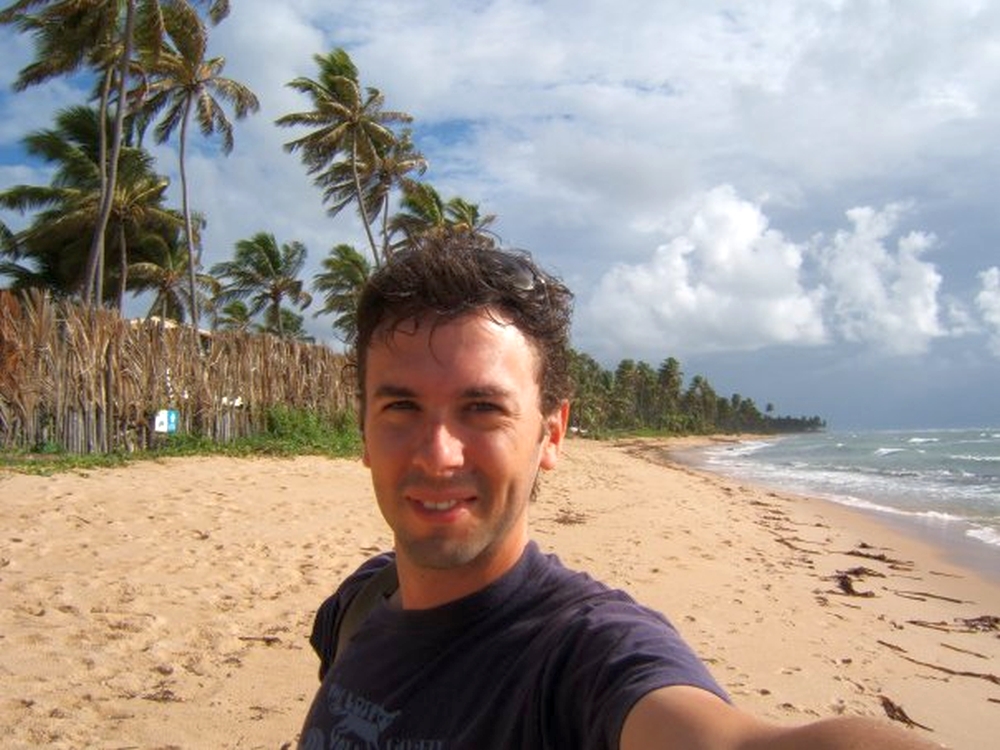
7) Are you really unbiased? I heard guidebook authors take freebies all the time for mentions in their books. is that true? Don’t people see you taking notes while you’re having a meal or looking around a hotel and become suspicious?
It’s a cardinal rule at Lonely Planet that we don’t take freebies in exchange for positive coverage, and it’s imbedded in every author’s moral compass that if they want to continue writing for Lonely Planet, they can’t take “comps” while on assignment. It’s true that I’m often taking notes everywhere. In restaurants I snap photos of menus and scribble away as the food arrives. I try to be somewhat discreet, but at the end of the day I have to get the work done, so I don’t really pay attention to whether folks are suspicious of me or not.
8) I heard you indirectly influenced Anthony Bourdain’s travels in Brazil. Can you tell us how you did that?
The last time I was in Rio, I met a woman who runs a guesthouse in Santa Teresa and is also a filmmaker. She told me she had used one of my earlier editions to Rio when she first moved here and discovered in the book a local guide I included who led favela tours (a man by the name of Paulo Amendoim, a lovely fellow).
She liked Paulo so much in fact, that she introduced him to Anthony Bourdain when he came down to shoot one of his No Reservations episodes in Rio (she worked on that particular episode). In the filming, Paulo showed Bourdain around the Rocinha favela, and of course, he never would have met him if I hadn’t featured him in the Rio guide.
9) Lonely Planet was recently sold to an american tobacco billionaire, and for a while there, it seemed that Frommer’s would no longer be publishing their written guidebooks (although this has since changed). What do you see for the future of a company like lonely planet whose main business has historically been the paper guidebook, and what do you see as the future for guidebooks in general?
I see the future of the guidebook as not just text on a printed page, but sound, video, images and music. Publishing companies must create a more interactive experience, and one that taps into not only an author’s expertise, but a wealth of other resources: downloadable walking tours, music from top singers of the region, photo spreads from the big contemporary artists of the moment.
Many authors are well-placed to provide these kinds of features. I also see a need for more specialized, curated content. If a traveler wants to check out street art in Lisbon, or go on a bohemian pub crawl through obscure outer neighborhoods in Barcelona, he or she should be able to access that. Currently, when I research a destination, I have so much more material than I can fit in a book. It would be great if there was a place for all these ships left at sea.
10) When writing for guidebooks, one has to be concise, clear, informative and interesting, all within certain writing boundaries for that specific guidebook publisher. What writing tips would you give young authors in general about the craft of writing?
Guidebook writing has to be a balance between being informative and descriptive. If you get too carried away with one or the other, it becomes either incredibly dull or overly flowery and just as equally unreadable.
When I’m writing I always try to imagine I’m penning a letter to a friend, conveying the essential information without being dry or pretentious. Keeping things concise is also essential (I’m better at this when it comes to writing guidebooks, less so when answering 10 questions for bloggers).
I’d suggest following the old inverted pyramid rule of journalism: tell the most important bits first, save the odd facts toward the end. Keep in mind that you’re writing these days for a global audience, so avoid using Americanisms or British/Aussie slang and overly ornate phrasings. You also need to learn how to edit your own work and to be able to cut it down to the essentials. Don’t rely on adjectives, and make every word count.
By Matt Stabile

ABOUT THE AUTHOR
 Matt Stabile is the founder and Editor-in-Chief of TheExpeditioner.com. You can read his writings, watch his travel videos, purchase the book he co-edited or contact him via email at any time at TheExpeditioner.com. (@TheExpeditioner)
Matt Stabile is the founder and Editor-in-Chief of TheExpeditioner.com. You can read his writings, watch his travel videos, purchase the book he co-edited or contact him via email at any time at TheExpeditioner.com. (@TheExpeditioner)
The post What’s It Like To Write For Lonely Planet? 10 Questions For A Lonely Planet Author appeared first on The Expeditioner Travel Site.
]]>The post 6 Questions For The Girl From “The Craziest OkCupid Date Ever” appeared first on The Expeditioner Travel Site.
]]>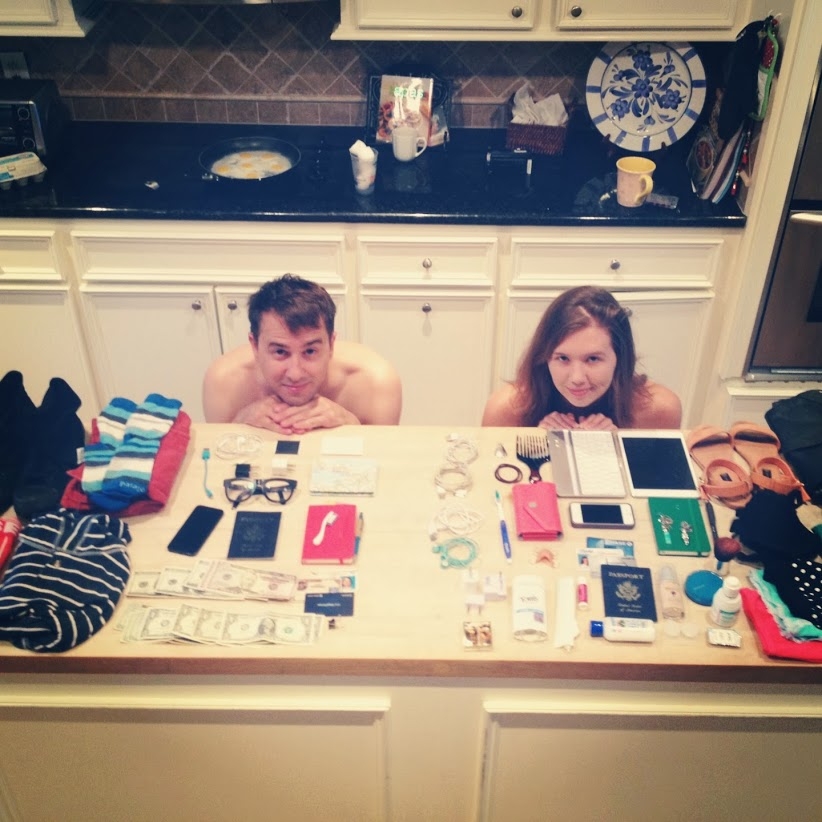
If you’ve been anywhere near a computer at all this week, chances are you’ve come across “The craziest OkCupid date ever,” the highly click-worthy article that was published by Salon on Monday, and which has since gone completely viral (over 16,000 shares on Facebook alone as of today).
The story chronicles the 21-day, ultra-minimal trip to Europe taken by Austin-based freelance writer Clara Bensen (ClaraBensen.com) and her date Jeff, whom she had recently met on OkCupid. Despite being in a relationship for less time than most of us go without getting a haircut, the two embarked — at Jeff’s suggestion — on a trip to Europe where each packed nothing more than what could fit in their pockets (and one small shoulder bag), which begs certain obvious questions regarding sanity, hygiene, the role of modernity in contemporary travel, our reliance on technology, and practical questions about washing one’s clothes with no spare clothes on hand.
Lucky for you, we tracked down Clara, who agreed to candidly answer our more pressing questions about her trip, the role of ultra-minimal travel in the world today, and most importantly, whether she and Jeff made it through to the present, relationship intact.
1) When I first clicked on the article, I thought I was going to read about a couple’s first date where they ended up in Budapest by the end of it. However, after reading a bit in, it appears you knew Jeff for about 6 weeks before heading off on your ultra-minimalist trip where neither of you brought much of anything for an 8-country, 21-day trek. How well did you really know Jeff up until that point, and how much more do you think you knew him after the trip was done?
Yes, you’re right. Jeff and I met online in April, bought the tickets four weeks later in May and boarded the flight to Istanbul in June. Some people interpreted the Salon article title as if we never met in person before embarking on the trip together. That’s not the case. I may have a wild, adventurous streak in me, but I’m not that wild.
2) What if this trip was your first date with Jeff? In all honestly, do you think it would have worked out? Do you think it would have been unwise to find that out?
The first time Jeff and I arranged to meet in person, he gave me a set of geographical coordinates and told me to meet him at exactly 7:52 p.m. The coordinates turned out to be a blue-tiled star right under the giant marble dome of the Texas State Capitol building. 7:52 p.m. was sunset. The word “subtle” has never been in his vocabulary.
Call me crazy, but I still think we could have pulled off an awesome adventure even if, by some freak chance, our first date had been a 21-day, no-luggage adventure. We connected as soon as we met on the Capitol steps, and the elements that brought us together the first night are the same things that we still enjoy about each other: a sense of adventure, curiosity, and a certain willingness to take a risk with the unknown. Those are key skills needed for any formative travel (or relationship) experience.
Qualifier: Don’t get me wrong: while the OkCupid chain of events worked out for me, I don’t generally recommend hopping on a plane with some stranger you had a nice online chat with. Common sense and gut intuition go a long way to ensure that you don’t land in Kinshasa only to discover that your travel partner has a penchant for collecting beard hair specimens in glass mason jars. Online dating is a crazy world, folks. Use your head.
3) How important do you think it is for a person who loves to travel to date and/or end up with someone who also loves to travel?
Well, I can’t speak for everyone obviously, but for me it is pretty important to date someone who also enjoys travel. And maybe travel is the wrong word. I think “adventure” might be more accurate, because travel is often expensive and completely out of reach, but adventure is always available, in some capacity, no matter where I live. Sometimes Jeff and I wake up in our home town of Austin, put on some shoes and walk out the front door with no plan or destination in mind. We wander around the city for hours, just like we did in Istanbul, Athens and Sarajevo. There hasn’t been a single instance where adventure has failed to show its face.
Also, freelance writing is not exactly a lucrative trade at the moment. I have a fairly simple life: I live in a 450-square-foot apartment, I don’t own a car, and I try to keep my expenses low. That being said, every so often I clean out my bank account for a ticket to some part of the world that I’ve never seen before. I need a partner who can understand and appreciate that impulse and (hopefully) share it with me.
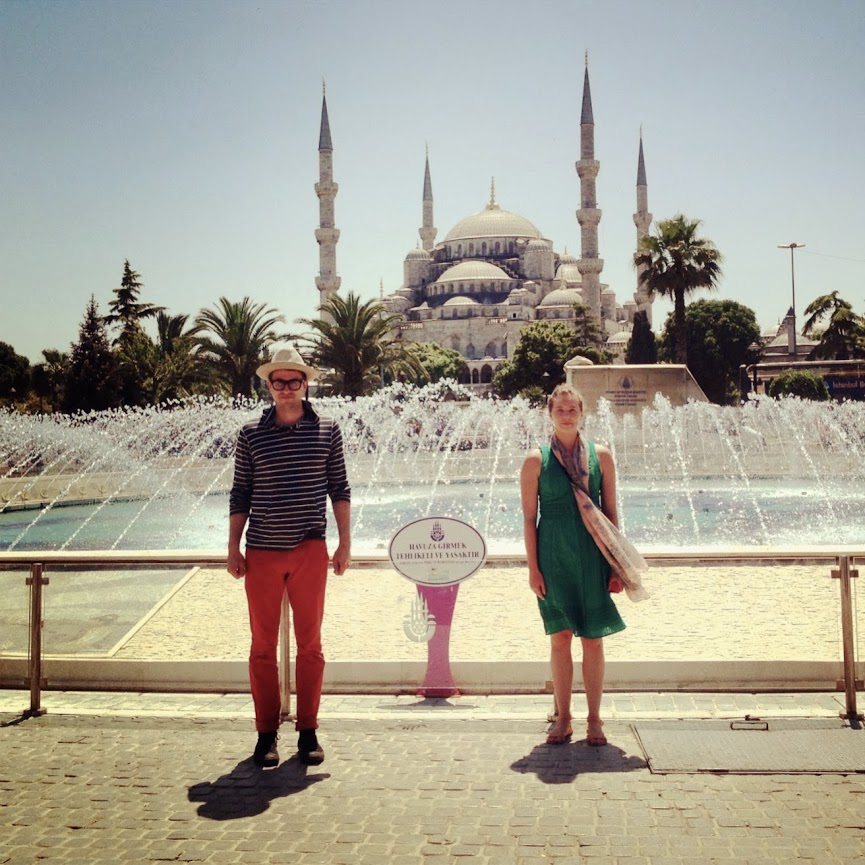
4) You mention in the article that you took nothing more than the clothes on your back, and few items that you could fit in a shoulder purse. How, beside the obvious hygienic implications, do you think travel differs when traveling with so little? Is it akin to living a minimalist lifestyle back home, or does it differ somehow because you’re on the road?
I was expecting ultra-minimalist travel to be much more difficult than it actually was. There was very little I missed about past travels with heavy backpacks and unwieldy suitcases. You really don’t need much. If traveling light differs in any significant way, it’s in the freedom of movement that it offers. I had never experienced that kind of lightness before.
Even though our story blew up because of the OkCupid angle, my original intent in traveling with so little was to explore my relationship with “stuff.” Some commenters have pointed out that millions of people in the world live with very few belongings and it was no big achievement for us to have gone luggage-less for a few weeks. That is a completely valid point and we wouldn’t deny it. Still, as an American living in a culture that places a high value on consumption and accumulating stuff, it felt personally meaningful to explore my dependency on physical belongings within the context of travel.
When I came back to Texas, I ended up giving away a lot of my belongings and about 3/4 of my wardrobe. My space feels so much more open and relaxed. I don’t miss any of it. So, yes, I think there are some crossovers between minimalist travel and minimalist living, at least based on my experience.
5) Beside having to keep in mind that the only clean clothes you were going to get to wear were the ones you were going to have to wash by hand, what were some of the practical implications of traveling so lightly? For example, the first thing that comes to my mind is having backups of certain items in case they get lost (credit card, contact lenses, memory card for my camera). Did you have any problems in this respect, and if not, was it just dumb luck, or were they problems that could have easily been overcome?
Like I said in the article, Jeff and I are both experienced travelers and even though the whole scenario appeared to be risky, we actually went out of our way to reduce the risk. We had copies of our important documents and phone numbers in secure online storage in case anything was stolen (it wasn’t). I had a backup pair of glasses in case my contacts were ruined. The only cameras we had were our iPhones, so there were no backups to worry about — everything uploaded to the cloud. We Couchsurfed and stayed with friends the entire way (only 3 of the 21 nights were spent in a hostel or hotel), so if we had run into trouble, we would have had a lot of troubleshooting support. The only thing we really wished we had brought was a tube of toothpaste (we broke down and bought some Crest in Athens).
Jeff and I agreed that we were willing to lose even the essentials that we brought with us. Travel always holds the possibility for the unexpected and that’s part of the fun. We also agreed that if we totally hated having no stuff, then we would just shift our plans and buy a cheap backpack. We’re not into suffering. It was originally just a fun, personal experiment that was designed to test our boundaries.
6) Lastly, be honest, there’s only so much cleanliness one can exude in the same set of clothes they have worn after three weeks traveling. Did you or Jeff have a certain Deadhead-like aroma about you come the end of the trip? Who held up best in the smell category, you or Jeff?
Surprisingly, no! There was only one instance of sub-grade hygiene. We took a 23-hour bus ride from Athens to Budapest and we smelled terrible by the end of it — greasy hair, unbrushed teeth and dirty feet, but I challenge anyone (even someone with seven suitcases of freshly pressed clothes), to smell like roses after that long of a journey!
We washed just as often as in the United States, which means I showered regularly and washed my dress every other day or so. I had a spare pair of underwear — Jeff didn’t. We also had deodorant, so honestly, we both smelled like fresh-cut lavender most of the time. Even when we’re not traveling I tend to take hygiene a little more seriously than Jeff, so I guess I win the smell category award (but not by all that much).
I will say this: I haven’t worn the green dress since the last day of the experiment. It’s hanging in my closet as the only souvenir I brought back from the trip.
*
Finally, to answer the most pressing question: yes, she and Jeff are still very much together. In fact, they’re planning a second adventure to South America over Christmas break.
By Matt Stabile

ABOUT THE AUTHOR
 Matt Stabile is the founder and Editor-in-Chief of TheExpeditioner.com. You can read his writings, watch his travel videos, purchase the book he co-edited or contact him via email at any time at TheExpeditioner.com. (@TheExpeditioner)
Matt Stabile is the founder and Editor-in-Chief of TheExpeditioner.com. You can read his writings, watch his travel videos, purchase the book he co-edited or contact him via email at any time at TheExpeditioner.com. (@TheExpeditioner)
The post 6 Questions For The Girl From “The Craziest OkCupid Date Ever” appeared first on The Expeditioner Travel Site.
]]>The post One Country Away From Seeing Them All: Q&A With Roaming Entrepreneur Chris Guillebeau appeared first on The Expeditioner Travel Site.
]]>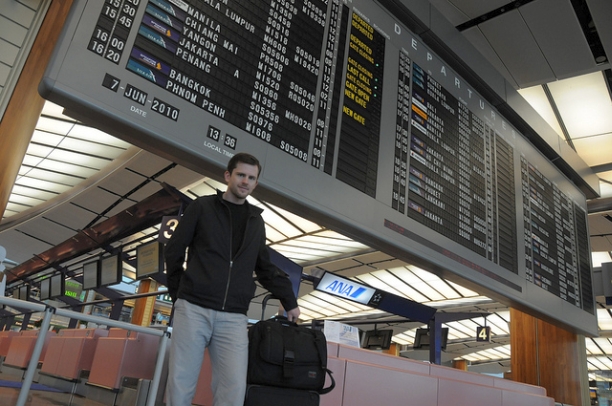
Still in his early thirties, Chris Guillebeau is one country away from completing a tour of every country on earth — all 193 of them — all while never having a “real job.” In his fight for eradicating conventional beliefs, he proves time and time again that “The Art of Non-Conformity” is not just a concept that works for him, but one that can work for anyone.
Ever since his first business, followed by four enriching years of volunteering for a medical charity in West Africa, Chris has never stopped traveling. He has given keynote speeches to presidents, spent time with indigenous populations and inspired people to become entrepreneurs. In doing so, he focused on three major topics: personal development and life planning, entrepreneurship and international travel.
For his latest book, The $100 Startup, Chris identified 1,500 individuals who have built businesses earning $50,000 or more from a modest investment (even from $100 or less). From that group, he’s chosen to focus on the 50 most inspiring case studies. In most cases, people with no special skills discovered that their passions could be monetized, and took the plunge in restructuring their lives towards greater freedom and professional fulfillment.
As he writes in his book, “You don’t need an MBA, a business plan or even employees. All you need is a product or service that springs from what you love to do anyway, people willing to pay, and a way to get paid.”
The Expeditioner: What was your first business idea and how did you come up with it?
Chris Guillebeau: Nearly 15 years ago, I learned how to buy and sell coffee. I loved the idea of earning my own income without depending on a traditional employer, so I kept trying different projects. Those that were successful, I put more effort into, and I haven’t had a job since.
How many days on average a year/month are you traveling?
About 150 days, I think. I’m usually away for two weeks at a time, then home for a while to work on books and other projects, then gone again.
You are one country away from completing your quest to see the entire world of 193 countries. How does that make you feel? What’s next?
It makes me feel both happy and sad. It’s been a 10-year journey, and in some ways I’m not ready for it to end. As for what’s next, well, I write, travel and connect with people. I don’t expect that will ever change . . . at least I hope it won’t.
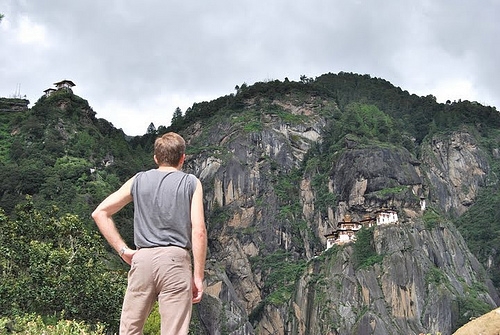
What are some of your favorite countries? Favorite continent?
South Africa, Macedonia, Liberia, Hong Kong, Laos . . . I could go on. I’m not sure I have a favorite continent, but I do love Australia — which of course is considered both a country and a continent in the U.S. system of geography.
You’re an expert in saving airfare costs, and so far you must have flown on thousands of flights. What’s your favorite airline and why?
A few favorites: Cathay Pacific, Singapore Airline, Royal Jordanian and Etihad. I’ll choose Cathay as number one since I’ve been with them dozens, if not hundreds, of times. I love passing through Hong Kong and the Cathay in-flight experience is great in all classes.
What was your worst flying experience?
More than once I’ve thought we’re going to crash, which is somewhat undesirable. Probably more common, though, isn’t the terrible flights but the sense of being stuck somewhere. I was stranded in Kiribati when the inbound flight had to return to Fiji for a mechanical issue. Waiting out the uncertainty of being stuck for an unknown amount of time was much worse than any bad flight.
What is your least favorite country (or countries), in which the local regulations greatly interfered with your travel plans?
There have been plenty of countries where I’ve run into trouble with regulations, but that doesn’t mean they are my least favorite. Sometimes, in fact, those countries are more interesting. I had trouble getting into Pakistan, for example, but once I made it I had a good experience.
What would be your first choice of living anywhere on the globe, if you had to move out of your home base of Portland, Oregon?
Sydney, Australia. It’s my favorite global city.
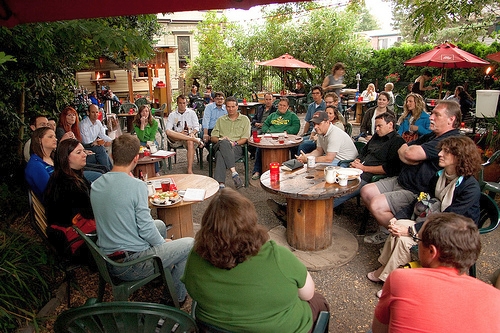
How was the process of choosing the 50 most significant case studies out of 1,500 entrepreneurs that contacted you for your latest book The $100 Startup? Could you name one that truly inspired you to make some changes to your own businesses?
It was a lot of work and a lot of fun. I was inspired many times over as I saw how so many ordinary people had been able to start businesses that earned at least USD$50,000 a year, and often much more. One of my favorite stories was Gary Leff, who started a six-figure (part-time!) business helping people book award tickets. He had constructed this business in a way that allowed him to continue working his day job, which he enjoyed. But he also had a fallback plan in case the day job stopped being meaningful.
Is one born an entrepreneur or does one discipline in becoming one?
I don’t think people are born with an inclination toward a certain career. At some point, one sees an opportunity and decides whether to pursue it or not. An entrepreneur will pursue it.
A start-up is a mountain to be climbed towards its peak. What would you say is the must-have “equipment” to reach the top?
Curiosity and the willingness to start something.
*
Quotes from The $100 Startup:
“The secret to a meaningful new career is directly related to making people feel good about themselves.”
“People will pay for information about travel, if packaged properly.”
“In the battle between planning and action, action wins.”
“Don’t think innovation, think usefulness.”
“Business opportunities are like buses; there’s always another one coming.” Richard Branson
“Good things happen to those who hustle.” Anais Nin
“Business is not a popularity contest.”
By Monica Suma

ABOUT THE AUTHOR
 Romanian by birth, but New Yorker at heart, there is nothing Monica enjoys more than traveling and exploring other cultures. Her 20-something relentless quests stem from a long bucket-list, always accompanied by her camera. Follow her adventures around the world on her blog www.Monica-Suma.com or on Twitter @MonicaSuma.
Romanian by birth, but New Yorker at heart, there is nothing Monica enjoys more than traveling and exploring other cultures. Her 20-something relentless quests stem from a long bucket-list, always accompanied by her camera. Follow her adventures around the world on her blog www.Monica-Suma.com or on Twitter @MonicaSuma.
The post One Country Away From Seeing Them All: Q&A With Roaming Entrepreneur Chris Guillebeau appeared first on The Expeditioner Travel Site.
]]>The post National Park Nomad: Q & A With Guidebook Author Michael Joseph Oswald appeared first on The Expeditioner Travel Site.
]]>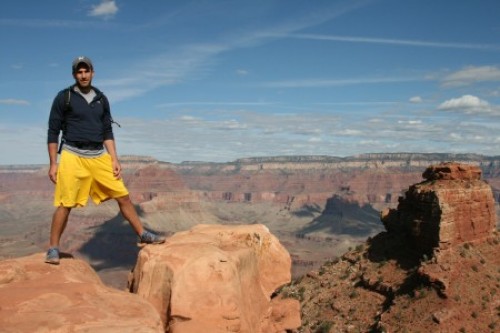
Sometimes we get caught up planning out our next epic adventure to exotic lands and far-off cultures, driven, in part, by eating extraordinary cuisine, meeting those that call the corners of earth home and seeing sites one has only heard about. This idea of exploration reaches out its age-old fingers to pull in even the most seasoned travelers. It is less often, however, that our very own backyard becomes the vision of these dreams.
On March 1, 1872, U.S. president Ulysses S. Grant signed the Act of Dedication, turning the boiling mud, deep canyons and explosive geysers of Wyoming into the world’s first National Park — a little place you might know as Yellowstone. Since then, America’s National Park System has blossomed to include 58 unique and equally awe-inspiring parks and has been the blueprint for preserving lands the world over.
There is a very reliable statistic floating around somewhere that says something like 438% of the visitors to these parks venture less than 4 inches from the metal wombs they arrived in. (Okay, maybe not, but you get what I mean.) Thus, they only scratch the surface of what these irreplaceable treasures offer: mountaineering North America’s tallest peak, shooting the rapids in the “grandest” of red-rocked canyons or simply gaining inspiration on banks of a water-filled volcanic caldera.
Recently, I opened my wobbly curbside mailbox. Ivory doves emerged as a lone spear of sunshine illuminated the title of the book I now hold. In my hands was the key to comprehensive engagement with the entire National Park System: Your Guide to the National Parks: The complete guide to all 58 National Parks. I haven’t put it down since.
I have yet to read a more comprehensive and detailed compilation done on the National Parks. Perhaps there are too many parks, with too much to do, and too much to say about each. Mind you, there needs to be a pretty high degree of awesomeness for a place to rise into the National Park ranks. Maybe the void of guides to all the parks is due to a lack of people brave enough to dive into a project of this magnitude. The speculation can end thanks to Michael J. Oswald.
I was lucky enough to track down Michael before leaving on his cross-country book tour from the driver’s seat of a (recently) broken-down school bus to ask him a few questions. He shared his insights on making the transition from traveler to travel writer, where everyone should eat lunch and his take on Snuggies.
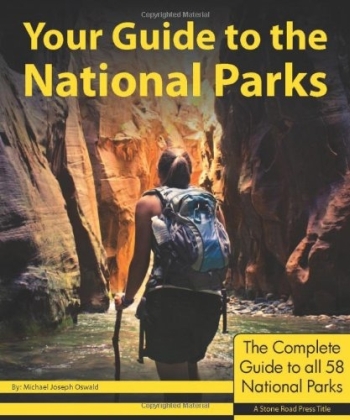
The Expeditioner: This is your first guide book. What possessed you to create a 704-page publication on every one of the National Parks? You didn’t want to tackle anything a little less, um, massive?
MJO: A magician never reveals his tricks. The doves are my little secret, but I’m happy to reveal all the secrets of Your Guide to the National Parks (YGNP). The pithy response is that brevity isn’t exactly my thing. With that said, only a hypocrite would leave it at that.
The real genesis of YGNP came from a long line of exceptionally poor, or at the very least, rash decisions. In the span of about a year, I left my job as an electrical engineer in search of a more emotionally rewarding lifestyle. So long cubicle with Western-style saloon doors, 9-5, paychecks, benefits and pension plan.
I set off to explore the parks in February 2009. I ventured into the park system once before, which stirred something inside me that has always existed. I began to think there could be something more significant between the park system and me beyond that two-week fling. Sleepless nights. Forgetting to eat. Six-hour phone calls repeating, “I love you more. No, I love YOU more.” All the signs were there: solitude, majesty, peace and adventure. It struck a chord with my soul. I felt at home. I fell in love.
Naturally, I was compelled to share these feelings with others. Forty-eight parks, 50,000 miles in my trusty VW, countless hours in front of a computer screen and you’ve got YGNP. It’s roughly four years of my life in 704 pages.
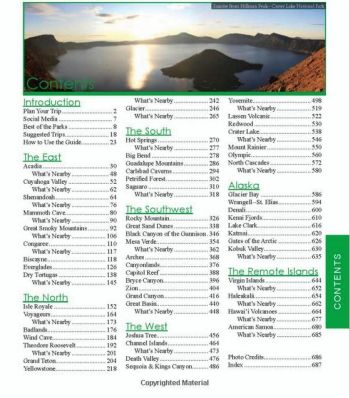
The Expeditioner: For those fellow travelers attempting to follow their own dreams of getting published, can you take us through the process? From concept to publication; traveler to guidebook publisher?
MJO: I’ve learned a ton during this project. The concept is simple. I was very familiar with many of the already published guides on the parks, but each left me wanting more — none seemed to quench my curiosity nor are truly comprehensive. In fact, they typically aren’t particularly good beyond the motor tourist type. But, when I picked up James Kaiser’s Acadia, The Complete Guide, I found my inspiration.
Research was the fun part. My car (50,000+ miles), bikes (thousands of miles), kayak (hundreds of miles) and legs (more than 1,000 miles) received extensive use. On average, I’d say I spent about one week in each of the 48 parks I visited (the other 10 were bypassed due to small visitation rates, high cost to visit, or a combination of both), and some parks received much longer stays than others.
Reality dictates that Congaree National Park in South Carolina doesn’t require as much time as, say, Grand Canyon. Those larger parks like Yosemite, Yellowstone and Grand Canyon, I visited during each season to understand the differences in visitation and activities available throughout the year. It was a long, fairly well thought-out process, and I loved every minute of it.
After I wrote and designed the first section on Acadia National Park, I stuffed the draft in my panniers and set off on a 10-day bicycle and backpacking trip around Lake Michigan and Isle Royale National Park. I found myself analyzing the template each night in my tent. By the time I was heading back to my hometown of Manitowoc, Wisconsin (sailing across Lake Michigan on the S.S. Badger car ferry), I had my design locked in and was ready to move forward with the rest of the parks. After something ridiculous like 10,000 hours in front of my computer, I took my hands off the keyboard and mouse and called it a book.
Then I tackled the printing and distribution side — a bit of leg work. The printing turned out great. However, distribution was a harder nut to crack. There needs to be a significant amount of trust between the publisher and the distribution. All the large independent distributors want publishing houses that produce at least five books each year, and that’s simply not me. At the end of a fairly extensive search, I signed a two-year contract with Cardinal Publisher’s Group in Indianapolis — no small feat as I have a terrible time signing a cell phone contract.
The last step was to begin implementing the marketing portion of my business plan. Which, well, here we are.
The Expeditioner: And doing pretty well at it, too. Now that you’re officially an author, what are you most proud of? What are some reactions you’ve see about the book?
MJO: The initial reception of my work almost always takes one of two forms of disbelief. I either get, “WOW!” or “Oh my God, this is incredible!”, to the other side of the spectrum with a comment such as, “There’s no way you did this on your own.” Both are equally flattering. One of the most satisfying reactions came during pre-press. Many of the pressmen and cover folks wanted to page through it long before ink touched paper. That was a pretty good feeling.
I have to say that I felt the most pride when I first saw my work on a bookshelf. However, I think the pinnacle of proudness will be when I see dog-eared copies of YGNP start showing up on peoples’ dashboards and coffee tables.
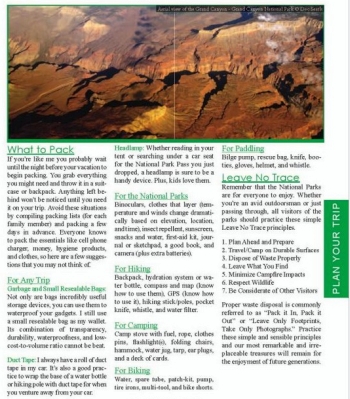
The Expeditioner: That won’t take long. Actually, there’s already a dog-eared copy sitting on my coffee table. When I paged through the book, one of the more impressive aspects is not just the breadth of information, but its depth. You’ve got top sights, sample itineraries, history, weather trends, maps, fun facts — it’s pretty incredible. What is your reaction to those that say, “There’s no way you did this on your own!”?
MJO: Copy and pasting! Ha! No, simply put, it was a lot of work. I spent nearly two years sleeping mostly in my car and tent, traveling from park-to-park, scribbling my thoughts into journals and collecting testimonials from park rangers and tourists. After the “research” phase, I took a seat at my computer and barely left that chair for the next two years.
Looking back at it now, it sounds completely insane. I literally spent all day, every day for two years sitting at my computer plodding along on this incredibly ambitious project. I think I just convinced myself I really am nuts.
The Expeditioner: I have to ask about the backward spine? Did you plan that? F-up? Marketing genius?
MJO: You don’t have to ask. I’d like to think of it as a Steve Jobs-ian marketing move on my part. Kids across the globe aren’t going to feel cool unless they’re toting a book with spine text that’s 180-degrees from the norm! So, when that catches on, you’ll have me to thank.
My goal was to destroy all the unflattering stereotypes surrounding work of self-published authors. I still think that goal was reached, but it’s disappointing to screw up something as obviously visible as the spine text. The fact of the matter is that it’s one of those oversights and a major bummer. (My editor, Derek, took it harder than I did, even flipping the book upside-down on his bookshelf so it looked right.) The good thing is that it doesn’t ruin the experience at all. Let’s just laugh and say it makes the book stand out on bookshelves a little bit, but it will get fixed for the next print run.

The Expeditioner: The Stone Road Press marketing strategy: flip the spine — brilliant. Let’s get to some top spots. Top 5 places you’ve eaten lunch and top 5 places you’ve slept?
MJO:
1) I love any lunch in the backcountry, but they’re mostly uneventful and alone. So any backcountry spot would be my #1. Beyond that, let’s see . . .
2) Grinnell Glacier (Glacier National Park): Glacier National Park is a lunch paradise, really.
3) Power Tower Island (North Cascades National Park): It’s a short paddle to this island inhabited by friendly deer.
4) Zion Narrows (Zion National Park): I’m not sure what mile I dined at, exactly, but I do remember freezing the entire hike through the Virgin River much of the way. Around noon, the sun crept above the canyon, slowly warming us as we ate our lunches. It was simply amazing.
5) Wild Cave Tour (Mammoth Cave National Park): After hours of crawling through narrow passages, we reached the “cafeteria” — dirty and sore — where we enjoyed a small lunch before returning to the depths of the cave.
And where I’ve slept . . .
1) In the Great Smoky Mountains with friends: Wandering — even in the midst of so much natural beauty — can get lonely on your own. The three of us spent the evening in a hot tub enjoying brews while discussing the region and life.
2) The rim of Crater Lake (Crater Lake National Park): In winter, snowshoes or cross-country skis unlock one of the best vistas in the country to campers who don’t mind spending the night in the cold.
3) In a rental jeep (outside Haleakala National Park): This was my first time sleeping in a car — a skill I’ve since perfected. That move saved enough money to travel the other islands bump it into this list.
4) Lane Cove (Isle Royale National Park): Lying in a hammock as the sun set across Lake Superior . . . enough said.
5) A Burger King in London, England. Long story . . .
The Expeditioner: I won’t ask. Let’s get serious here for a second, would you agree that besides the Snuggie, the National Park System is one of the greatest things America has given the world?
MJO: Most definitely. An image of a person sporting a Snuggie on top of Yosemite’s Half Dome would be enough to make any country envious.
The Expeditioner: So what’s next? I heard something about a school bus tour?
MJO: Yup! I’ve purchased an old school bus, which will be transformed into the Stone Road Press Tour Bus. Any artists wanting to help out with the exterior are welcome to have their way with it. But that’s just part of the marketing plan. I mailed out copies of my book to all the Flickr contributors, celebrity types, book review outlets, bloggers, and I have have also engaged several local media markets.
I’m getting excited about the tour. I’ll be updating all the book’s media outlets as I start piecing more plans together. Those include: The Stone Road Press website, Facebook page and Twitter feed (@stoneroadpress). YGNP is presently available online at Amazon and Barnes & Noble. E-books are available at Amazon, Barnes & Noble, Kobo and coming soon to a few more outlets.
The school bus just completed an extended stay at a mechanic to get “road-trip ready,” and I asked, “How many books is it going to cost me?” He wasn’t having it, but the goal right now is to at least break even, keeping me afloat until I can get my next title ready. Who knows if it will work? I’m hoping to at least cover any additional mechanical work.
By Jon Wick
[Your Guide to the National Parks: The complete guide to all 58 National Parks via Amazon]

About the Author
 Jon lives in Butte, Montana, spending most of his time on skis or bikes; sometimes ski-bikes. He began travel writing while teaching in Korea and recently completed his Master’s Degree in Technical Communication at Montana Tech. Jon squeezes in time to write his first book, A Trip Worth Dieing For, between projects at 5518 Designs. Catch more of Jon at TheJonWickProject.wordpress.com. (@ExpedJon)
Jon lives in Butte, Montana, spending most of his time on skis or bikes; sometimes ski-bikes. He began travel writing while teaching in Korea and recently completed his Master’s Degree in Technical Communication at Montana Tech. Jon squeezes in time to write his first book, A Trip Worth Dieing For, between projects at 5518 Designs. Catch more of Jon at TheJonWickProject.wordpress.com. (@ExpedJon)
The post National Park Nomad: Q & A With Guidebook Author Michael Joseph Oswald appeared first on The Expeditioner Travel Site.
]]>The post BackpackMojo.com Wants To Pay You To Help Others Travel Better [Q&A] appeared first on The Expeditioner Travel Site.
]]>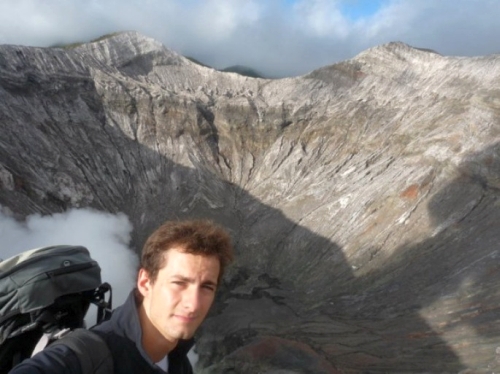
The Expeditioner sits down (virtually) with Co-Founder Kevin Creusy Of BackpackMojo.com for a chat on how backpackers can travel better, what it’s like founding a startup and why Mars is the next Laos for backpackers.
Imagine a scenario: You have a measly 12 vacation days off from work and the possibilities are endless. Your plans are like an open book, a spinning globe, a blank slate . . . you get the idea. All you know is that you pine to leave the ho-hum predictability of the daily grind (regardless of how much you enjoy your job) and embark into the adventure-ridden abyss of backpacking.
So what’s the next step?
Do you peruse the dusty old shelves of the local used bookstore, kick it old school and open up the travel section of the city newspaper, or fritter away an inordinate amount of time on Wikipedia? French travelers Kevin Creusy, 23; Antoine Heber-Suffrin, 26; and Pierre Margueritte, 22; are the co-founders of BackpackMojo.com — a website offering trustworthy travel information from in-the-know intrepid backpackers.

In addition to featuring an adorable monkey as a mascot (who looks peculiarly like an ewok) the fledgling website serves as a platform for members of the “backpacking tribe” to both connect and confer on trip planning. A departure from the overused Lonely Planet model, BackpackMojo.com allows wanderlust souls to glean travel information ranging from the balmy climate of San José to the windswept tundra of Australia.
*
I had the good fortune of talking with Creusy, and was able to coax him to dish about why—and how—he launched the website, his advice to similar entrepreneurs and where we would teleport to (you know, if that was possible and all).
The Expeditioner: Tell me the basics about Backpack Mojo, and why you decided to start it in the first place.
Kevin Creusy: Backpack Mojo is a unique concept of self-edition platform for all kinds of travelers that enables them to create their own travel guides.
We came up with this idea while we were traveling in Indonesia. We realized that out of the 1,000 pages in a Lonely Planet guidebook, generally we just use a hundred of them, and waste all the rest. This was the first real observation we made. What came next was the thought that if everyone shared their unique tips and tricks about all the trips they did in the past, we wouldn’t end up on the same “travel guide road” and would have a much wider range of travel options at any time.
We started looking for a better way to share travel information a platform that would make it easy for all travelers to share their insights in an itinerary-based manner.
We really believed that well-organized, easy-to-access content would be a game changer in the e-travel industry.
The Expeditioner: Ideally, would you like Backpack Mojo to function more as a social media site or a travel site?
Kevin: Well, we are ambitious! We want Backpack Mojo to be the ultimate place of exchange for travel knowledge. So in that sense, our travel guides are a potent tool, but not the only one available on the website.
We also have a social media feature called “Tribe” that enables users to follow other people’s adventures by joining their groups. Once you join a traveler’s tribe, you receive his updates on your own “Tribefeed” and can communicate with him or her directly. It’s a way for travelers to stay in contact with each other on a backpacker-dedicated social network.
On the other side, Backpack Mojo is also the only site online today that can answer the question: “I am going to Japan for 20 days, what can I do?”.
An itinerary is often the fruit of a long labor on many forums, travel websites, as well as hours spent questioning friends. Our website automatically highlights the most relevant travel guides for travelers in quest of inspiration.
The Expeditioner: Tell me about the monetary compensation. I understand that backpackers can get paid for the guides they provide?
Kevin: Absolutely! In the near future, all travel writers on Backpack Mojo will have their own “author shop” on the website and on our mobile apps. Every travel guide written on Backpack Mojo can be bought by travelers searching for inspiration and unique travel tips. A travel guide is sold for 20€ (around $25) on Backpack Mojo, and out of this the author gets a 25% commission. This also allows readers to help support those authors’ travels.
Today, thanks to hours of hard work, we can deliver these travel guides within 10 days worldwide.
Our pending mobile app will also allow users to access travel guides, but the principle is slightly different. All travel guides will be free by default, but an author can choose to sell his travel guides for a price of his choice. Again, the author gets a 25% commission out of the price paid by the reader.
We focus as much as possible on being fair with travelers. This is also the reason why we chose to offer them their own printed travel guide once it is complete.
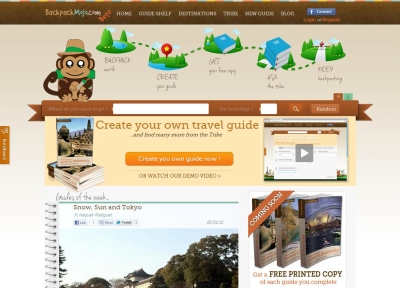 The Expeditioner: What other benefits do travelers have to using your website? Why is it better than using a guidebook?
The Expeditioner: What other benefits do travelers have to using your website? Why is it better than using a guidebook?
Kevin: Well this is a tough question — we have a completely different approach to classic guidebooks. While they focus on giving the widest possible information about a country, we focus on specific itineraries and unique information gleaned from real traveler experience.
In a Backpack Mojo guidebook you will find very little information about the country itself, but a whole lot regarding the road you decided to travel. Specific tips and tricks, hotspots, and transportation information hold the most important place in our travel guides.
Furthermore, because of the huge range of destinations they cover, classic guidebooks have a hard time keeping their travel information relevant and up-to-date. A Backpack Mojo travel guide, because it’s created by a recent traveler, is a recent and reliable source of travel information. Regarding older Backpack Mojo travel guides, the date at which the author traveled is present on every page, a way for the reader to evaluate the relevance of the information he is reading.
The Expeditioner: What are the challengers to starting your own site?
Kevin: Definitely web development. It was necessary to build a team with both the skills and passion for travel to run such a complicated project. Once the platform was finished we only needed to spend a few thousand hours developing and coordinating the project!
Acquiring the techie-skills was a challenge for everyone, whether it was about community management, web development, or finance and accountability, every aspect was a challenge but everyone rose to the task.
The Expeditioner: If you could go back in time 5 years and give advice to yourself from the future, what would it be?
Kevin: Invest in Apple? More seriously, I think I would have chosen to take a more “technical” education. I would have loved to specialize in web and software development. This would have been (and would still be) very useful to Backpack Mojo.
The Expeditioner: Do you have any advice for other entrepreneurs looking to start their own online business?
Kevin: Start a business you are passionate about. It will require such intense devotion that, if it’s not the case, you might have real difficulty to find the determination necessary to succeed.
The Expeditioner: If teleportation existed, and you could be anywhere in the world right now, where would you be, and what activity would you be doing there?
Kevin: I would teleport to Mars and do a little backpacking there. I would probably try to hike The Olympus Mons, the highest mountain in the solar system . . . if I had an oxygen tank and solar-suit of course.
The Expeditioner: Besides The Expeditioner contributing editors, who are your favorite travel writers?
Kevin: I won’t lie if I say that my favorite travel writers are all on Backpack Mojo. I start everyday of work by choosing a random travel guide and reading it. It is my own personal way to travel while I am stuck at the office.
There are of course many bloggers (EuropeUpClose, GoSeeWrite, etc . . .) and travel magazines I really like to read from such as The Expeditioner. As you might have guessed I spend almost all my free time reading about travel.

About the Author
 Jenna Blumenfeld, (Jenna Ogden Blumenfeld when she’s in really big trouble) hails from the wee state of Connecticut. Although her childhood dream of becoming a bug doctor — with a specialization in ladybugs — has gone unfulfilled, she is content writing about travel, cuisine and culture. A vegetarian, she currently resides in the food hub of Boulder, Colorado. Read more of her food-centric writing at NewHope360.com.
Jenna Blumenfeld, (Jenna Ogden Blumenfeld when she’s in really big trouble) hails from the wee state of Connecticut. Although her childhood dream of becoming a bug doctor — with a specialization in ladybugs — has gone unfulfilled, she is content writing about travel, cuisine and culture. A vegetarian, she currently resides in the food hub of Boulder, Colorado. Read more of her food-centric writing at NewHope360.com.
The post BackpackMojo.com Wants To Pay You To Help Others Travel Better [Q&A] appeared first on The Expeditioner Travel Site.
]]>The post Q&A: Rolf Potts Went There appeared first on The Expeditioner Travel Site.
]]>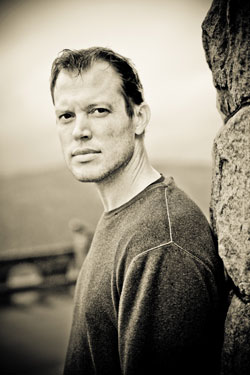
Q&A with Nomad Rolf Potts, Author of Marco Polo Didn´t Go There
It is easy to forget that when it comes to “travel writing,” traveling is the easy part. These days, anyone without the last name “Bin Laden” can buy a plane ticket and go just about anywhere.
But turning a trip into a compelling narrative that speaks to an audience as fickle as travelers in a way that packages reality into something readily digestible (deep breath), is where travel writing and great travel writing diverge. To execute great travel writing effectively requires an artist´s attentiveness. Like anything worthwhile, it involves hard work. Sometimes (cue Beethoven’s 5th), it even requires getting a college degree.
Now cue Rolf Pott’s book Marco Polo Didn’t Go There. Open the pages and find a book that takes you from this corner to that corner of the globe via compelling narratives on a quality level that even few fiction writers inhabit. And fiction writers get to make shit up.
As a traveler who has reported from over 60 countries, Rolf Potts understands that so much of a story depends upon how it is told. The book manages to inform without boring and inspire without being trite. The stories have a keen sense of place, juxtaposed with the author-admitted “placelessness.” All this creates a pleasant unfolding of informed discovery.
Potts tells his stories in such a way that at times you to feel like you are sitting in a bar over a beer listening as a fellow traveler exchanges tales. At the end of each chapter, Potts includes a commentary of endnotes that provide context and elucidation for each story. Much of these endnotes provide a window into Potts’ writing process and cause the book to be just as relevant for aspiring writers wanting to improve their craft as it is for travelers seeking inspiration from “One of the finest travel writers working today” (Pauline Frommer).
To expound on his book and travel vision, Rolf Potts fielded questions for The Expeditioner about his book and life as a vagabond. Marco Polo Didn´t Go There is available from his website along with links to his essays and articles.
The Expeditioner: Your intro mentions that some social critics say that “Real Travel” is dead. I think your book is a sufficient rebuttal to this negative assertion. But why are such negative assessments out there? Was there an “ideal” time to be a traveler? Is it past or present?
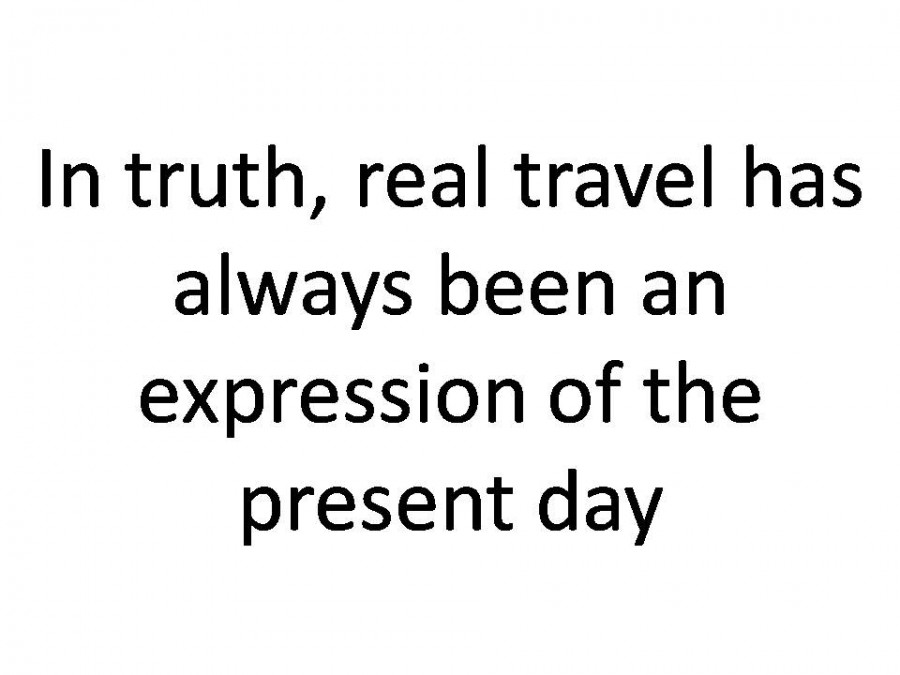 Rolf: I think it’s normal for people to fret that “real travel” might be dead, especially as they get older, or as society changes. The whole “death of travel” issue has been debated for generations, and has gone through countless variations. When railroads and steamships made travel faster and more efficient in the early nineteenth century, some people claimed that this destroyed the kind of travel one experienced on stagecoaches and sailing boats.
Rolf: I think it’s normal for people to fret that “real travel” might be dead, especially as they get older, or as society changes. The whole “death of travel” issue has been debated for generations, and has gone through countless variations. When railroads and steamships made travel faster and more efficient in the early nineteenth century, some people claimed that this destroyed the kind of travel one experienced on stagecoaches and sailing boats.
When Thomas Cook started doing continental group-tours for middle-class Englishmen around the same time, the old aristocratic Grand Tour elite claimed that this ruined the experience of travel in Europe. Other people claimed that “real travel” ended with the Age of Exploration. In truth, real travel has always been an expression of the present day.
There are occasions when I’m tempted to think that travel was purer before the ubiquity of smart phones and social networking (which have a tendency to chain your travel experience to certain aspects of home), but I have to remind myself that travelers have always made use of whatever technology was available, and that I can’t base my prejudices on how I traveled 10 or 15 years ago. I’d imagine travel will always be “real”; serious travel writers just have to know how to slow down and maintain their awareness, even as the manner in which we travel changes.
The Expeditioner: Your book is more than just a travel memoir, it offers a lot on the subject of travel writing. You say that, “When you enter into an experience with the intention of writing about it, you tend to travel the world more creatively and observe it more thoughtfully.”
Does the expectation that you have to turn every trip into something someone wants to read put a strain on your travel? Do you ever take a vacation from this sort of travel and go somewhere deliberating deciding you will not be writing about the experience?
Rolf: I’d imagine the compulsion to turn all of one’s travel experiences into narrative would be a strain, but it’s rarely been that way for me — at least when I’m out vagabonding. When you’re out wandering on your own, in an open-ended way, the intention to write does make you travel more creatively, but you always end up having far more experiences than you could ever write about.
In the year 2000, for example, I spent nearly five months in the Middle East, and I wrote about ten stories about the experience. Add those ten stories together, and you’re only accounting for about two cumulative weeks of that five-month experience. The rest was just general travel — experiences that were enjoyable (or perhaps on occasion dull), but not worthy of a story. Traveling as a writer need not confine or overwhelm your on-the-road experience; ideally, it just heightens your awareness and makes you bolder than you otherwise might have been.
An exception to this is traveling on a short-term magazine assignment, when you have something very specific to cover. In these situations you have less of a chance to wander, and the dictates of your story can be a bit of a strain sometimes. But these assignments can be great for paying the bills and funding more open-ended adventures.
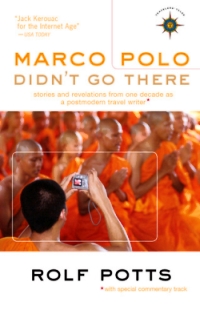 The Expeditioner: At the end of each story in your book you provide a “Commentary Track” of notes and clarifications. It made my job of writing questions rather challenging, since you essentially answer most questions and clarify doubts within the narrative itself. What made you decide to include this?
The Expeditioner: At the end of each story in your book you provide a “Commentary Track” of notes and clarifications. It made my job of writing questions rather challenging, since you essentially answer most questions and clarify doubts within the narrative itself. What made you decide to include this?
Rolf: It’s something I always wished other nonfiction writers did when they collected their stories and essays into book form. Any lived experience is going to get reduced to the size of a story when it comes time to write it, yet that doesn’t change the fact that so many things happened in real life that would never fit into the story itself.
My endnotes are an acknowledgment that life is always bigger and more complex than anyone’s ability to write about it. Any nonfiction story is the result of a decision-making process that boils the anarchy of moment-by-moment life into a narrative-sized chunk that hopefully entertains and conveys meaning, and I wanted to give readers a window into this process.
The Expeditioner: Despite making my job harder, I appreciated your commentary at the end of each story. It added a revealing dimension to your writing that is rarely present. It showed that non-fiction writing (specifically travel writing) sometimes needs a slight reworking of reality make the story compact and digestible.
It is something that all writers do, but I think it is sort of seen as a dirty little secret: don’t ask, don’t tell. How has the feedback been in including a commentary of endnotes? Have you received any negative criticism and if so what has been your response to it?
Potts: People have appreciated the endnotes, especially aspiring nonfiction writers, who enjoy the peek they can get at the inner workings of a story. The few people who’ve been negative about the endnotes have tended to be pretty naive in their assumptions about how stories work.
When my book was reviewed by the San Francisco Chronicle, a website commenter said something along the lines of, “Well I could be a big-shot travel writer too, if I edited all the boring details out of my experiences.” I was kind of flabbergasted when I read that, because everyone — not just nonfiction writers — edit out the boring details when they tell stories. If you see a fight at a bar and you go home to tell your roommates about it, you don’t start by describing the songs that were playing on the radio on the drive over, or what brand of urinal cakes were in the toilets, you cut straight to the most relevant and dramatic parts of what happened. That doesn’t mean you’re fictionalizing the events and details, it just means you’re sticking to the most relevant ones.
So the process of storytelling is invariably reductive — you have to take all the details of what happened, and boil them down to the size of a story. The catch here for non-fiction writers is that while you can subtract, you cannot add events and details. You can skip over certain things that did happen, but you can’t make up things that didn’t happen. That’s when what you’re doing becomes fiction. As a non-fiction writer I’m obligated to only include events and details that happened, and my endnotes reflect that.
The Expeditioner: Do you have a favorite travel story you’ve written either in the book or elsewhere?
Potts: I’ll always have an affinity for “Storming ‘The Beach,'” since it was my first big breakthrough story, and it opened the doors to so many great writing opportunities. But that story was kind of a “stunt,” and while I love doing stunt-stories, they aren’t as emotionally resonant as the stories that arise more organically.
“Death of an Adventure Traveler” has the strongest emotional association for me, not only because it deals with the disappearance of a man I deeply respected, but also because it symbolizes so much about the kind of travel that relatively privileged Western wanderers like myself often overlook.
I’m also keen on “The Art of Writing a Story About Walking Across Andorra,” since it afforded me the chance to employ a meta narrative technique to satirize the conventions of generic travel writing.
The Expeditioner: What projects do you have in the pipeline?
Potts: I’ll be pitching a new travel book to publishers this spring, the details of which I probably won’t announce until it’s closer to completion. When that book is finished I hope to get back to my vagabonding ways for a bit — to just get back out into the world and wander with no particular goal in mind.

About the Author
 Luke Maguire Armstrong lives in Guatemala directing the humanitarian aid organization, Nuestros Ahijados. His book of poetry, iPoems for the Dolphins to Click Home About (available for sale on Amazon.com) is especially enjoyed by people who “don’t read poetry.” (@lukespartacus)
Luke Maguire Armstrong lives in Guatemala directing the humanitarian aid organization, Nuestros Ahijados. His book of poetry, iPoems for the Dolphins to Click Home About (available for sale on Amazon.com) is especially enjoyed by people who “don’t read poetry.” (@lukespartacus)
The post Q&A: Rolf Potts Went There appeared first on The Expeditioner Travel Site.
]]>The post Q&A: GRAMMY Nominee Chandrika Krishnamurthy Tandon Speaks From Her Soul appeared first on The Expeditioner Travel Site.
]]>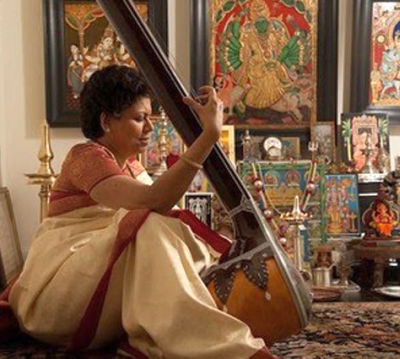
Chandrika Krishnamurthy Tandon is proving to the world that it is possible to live out your passion, even if it means clearing the path to success a little later in life. As a distinguished leader in the financial sector, and a 2011 GRAMMY nominee for her album, Om Namo Narayanaya: Soul Call (on Soul Chants Music), Tandon has much to revel in. The road to her success has not been easy, but Tandon is not the kind of woman who backs down to a few blockages.
Thirty years ago, Tandon moved from her home in India to New York City with only $24 in her pocket. She landed a job with McKinsey — America’s most prestigious management consulting firm — but had to sleep on the floor of her apartment for the first six months after choosing to use her first paycheck to buy a Martin Guitar and a great hi-fi so she could finally hear her favorite music in stereo.
Throughout her career, Tandon traveled the world for business purposes, but was always drawn to the eclectic sounds of a place. She would seek out local musicians, follow music festivals in the streets and attempt to learn languages through songs.
Even as a child Tandon was infatuated with music, but she knew choosing it as the course of her studies would not be accepted by her family. So it wasn’t until many years later, after reaching the height of her career in finance, that Tandon became in tune with what her soul had been calling out to her all along.
She began rigorous musical training with some of the most prestigious instructors in the world; at one point waking up at 4 a.m. every weekend to drive from New York to Wesleyan for master classes with a Carnatic music professor, returning by 10 a.m. to be home when her daughter awoke.
Reconnecting with her culture through intense study of Indian ragas (melodic modes used in Indian classical music), Tandon created an album composed around a single eight-syllable chant that is over 6,000 years old.
Her growing fan base speaks volumes to the powerful message that she spreads every day in her Facebook postings, and the music that has brought so many together.
In the interview below, Tandon tells The Expeditioner how the quest to “lose herself” has been her greatest accomplishment yet.
 The Expeditioner: As a distinguished and prominent leader in the financial sector, you have had the opportunity to travel to many international destinations. Have any of these experiences influenced your music in a particular way?
The Expeditioner: As a distinguished and prominent leader in the financial sector, you have had the opportunity to travel to many international destinations. Have any of these experiences influenced your music in a particular way?
Tandon: My musical tastes and influences have always been far ranging; I hear music everywhere, in everything, every moment — consciously and unconsciously.
I am influenced by everything from Greek and Middle Eastern musicians like Demis Roussos, Nana Mouskouri, Oom Khatoum, to French musicians like Enrico Macias, to Brazilian artists like Gal Costa, Daniela Mercury, Carnaval sambas, Caetano Veloso and full circle back to classical Indian musicians such as Jasraj, Sahasrabuddhe, MS Subbalakshmi, Vijay Kichlu, T Viswanathan, and of course my master teacher Pandit Girish Wazalwar.
This inevitably influences my music. For example, in track 8 [of Soul Call], I was only hearing guitars and violins. I was thinking of Malaguena and “Hava Nagila” and various other songs as I was composing in this classically rigorous Indian scale.
The Expeditioner: You once said that “music breaks boundaries easier than words.” It is apparent, by simply viewing the comments from your fans on the Soul Chants Facebook page, that your album, entitled Soul Call, has reached an international audience on a very deep level. In what ways do you believe music to be the impetus for change among the international community?
Tandon: Music penetrates your deepest levels in most unconscious ways and all defenses crumble without one even knowing they have. When people can express their own joy through music, they radiate it all around them and the circle of love expands. That is what has happened on our Facebook page. From a trickle a few weeks ago to 32,000 plus fans with such profound expressions of their experiences.
The Expeditioner: What is the most rewarding part of hearing such positive feedback from people all over the world?
Tandon: I feel lucky to be a small part of each person’s journey. I feel tears well up every time I read the hundreds of e-mails from so many people. There has been an outpouring of expressions of people’s open, heartfelt feelings — and to me that is what it is all about. I am grateful for the nomination as it expands my circle of love.
The Expeditioner: Your mother, a talented Carnatic classical musician, inspired a love of music within you as a young child, yet you did not choose to follow this passion until much later in life. What rekindled your fervor for music, and how did you decide to pursue your musical talents?
Tandon: About nine years ago I woke up one day when my daughter was starting high school and realized that, though I had reached many measures of business success, I had not connected with my deepest self, my life’s purpose. I went on a journey going back to who I am. I asked myself: What makes me happy? And it struck me that all of my happiest moments in life go back to music.
I needed to pursue my passion for music and share it with everyone. That began my phase as a music seeker where I sought out extraordinary teachers who would give me a rigorous grounding in classical Hindustani music and I have since worked with Pandit Girish Wazalwar, who is my main Guru. I have also worked with a couple of masters, both in India and New York City, often traveling for a few days at a time to India to learn from them.
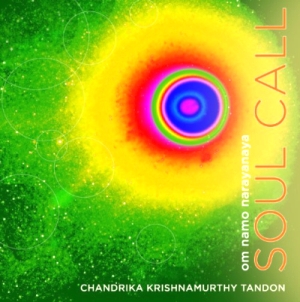 The Expeditioner: You will be donating all proceeds of Soul Call to benefit organizations in the fields of community building, arts, and spirituality. What prompted you to want to give back to these specific organizations?
The Expeditioner: You will be donating all proceeds of Soul Call to benefit organizations in the fields of community building, arts, and spirituality. What prompted you to want to give back to these specific organizations?
Tandon: Again it is part of the broader vision I have of a circle of love, and I want everyone to hear the music. We have just donated or given at cost the CD to many wonderful organizations that are doing work in the areas connecting people, and helping people heal inside. They are far ranging in their specific causes and objectives, but it has been a wonderful journey.
The Expeditioner: The music on your album is a combination of an eight-syllable chant — Om Na Mo Na Ra Ya Na Ya — and classical Indian scales. The syllables of the mantra are vibrations used in an ancient Vedic tradition handed down from generation to generation, believed to have deep healing powers. How has connecting with such a powerful form of music helped you to understand different facets of Indian culture?
Tandon: The eight syllable chant is believed to form a protective armor around the body as the cells go through their regeneration processes, and I have composed it in eight ragas or melodic scales.
I had to connect in this my own research on the texts, and combine it with my rigorous grounding in Carnatic (south Indian) and Hindustani (north Indian) classical music. But I also wanted to make it accessible to all across countries and demographics, so I used simple melodies with contemporary arrangements drawn from all my travels in the world. This allows everyone to sing along and have a shared celebration of music.
The Expeditioner: So what’s next for you, besides a possible GRAMMY and steadily growing fan base?
Tandon: I just finished the recording of my new album that has a lot of international musicians which will be released in a few months, and I keep waking up with so many inspirations. I have hundreds of compositions that literally flood my head, and it is very exciting to give them shape as full blown compositions and arrangements.
I also conduct a community choir for the seniors every week and create new compositions for them — pushing new boundaries in Indian classical music and making it joyful and accessible.
The GRAMMY nomination and my recent work have led to several invitations to collaborate, and I am excited to pursue my brand of global music.
Where now? What next? I live by a two-line quotation from a Sufi mystic named Kabir: “When I was there, the divine was missing; When I left, the divine took over.” My quest is to lose myself.
By Maria Russo

About the Author
 Maria Russo is a freelance writer who loves natural wonders, good eats, ethical travel, and boutique hotels. Her work has appeared on the Huffington Post, USA Today.com, People.com and A Luxury Travel Blog, among others.
Maria Russo is a freelance writer who loves natural wonders, good eats, ethical travel, and boutique hotels. Her work has appeared on the Huffington Post, USA Today.com, People.com and A Luxury Travel Blog, among others.
When Maria is not writing for her all-time favorite site (that would be The Expeditioner), she spends her time blogging about foreign jaunts and delectable food experiences for her site: Memoirs of a Travel & Food Addict. She is also up to no good on Twitter (@traveladdictgrl, @expedmaria).
The post Q&A: GRAMMY Nominee Chandrika Krishnamurthy Tandon Speaks From Her Soul appeared first on The Expeditioner Travel Site.
]]>The post Q&A: A Taste Of The Dordogne With Author Kimberley Lovato appeared first on The Expeditioner Travel Site.
]]>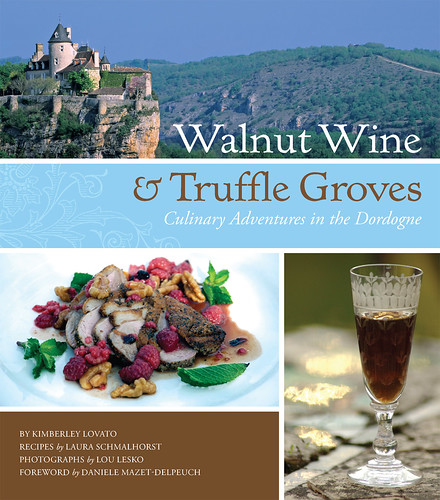
By Maria Russo
In her latest book, “Walnut Wine & Truffle Groves, Culinary Adventures in the Dordogne,” Kimberley Lovato explores the medieval towns, bucolic countryside, and remote villages of this southwest region of France through the fascinating heritage of its people, and the local cuisine that has kept century-old traditions alive and well.
The book’s vivid photos, intimate stories, and pages of recipes, gives it a fresh, more immersed approach to travel writing by escorting the reader on an adventure through the senses. Whether it’s admiring the spectacular Château de Beynac, hearing the cacophonous sounds of the market as vendors prepare for the day ahead, or tasting warm, duck confit in the home of a local chef, Lovato paints a tangible picture that is deliberately enticing. The following is an interview with Lovato about her personal encounters in the Dordogne, and the inspiration behind the book’s vibrant pages.
The Expeditioner: The layout of “Walnut Wine & Truffle Groves” is very unique. It blends pages of photographs, local recipes, and intimate stories about the people of the Dordogne region. What inspired you to create a culinary travel book?
Kimberley Lovato: The book was inspired by Chef Laura Schmalhorst and her culinary tour company Vagabond Gourmet. I was on assignment during her inaugural launch in the Dordogne and I was struck by her passion for ensuring each guest experienced the region through the food, not just by eating it (though that was a bonus too), but also by visiting the markets, the farms, meeting the local cheese makers and vintners, exchanging recipes, and mixing their stories and histories into every meal. This idea developed into “Walnut Wine & Truffle Groves” and it’s a concept that is unique among travel and cookbooks. Add in some gorgeous images by award winning photographer Lou Lesko and our book really shines. I can’t think of another one like it.

The Expeditioner: The personal accounts in the book really seem to connect readers to the very essence of the culture in Dordogne. How did your experiences with chefs, winemakers, hoteliers, and old friends affect the way you came to understand the true lifestyle of the people of Dordogne?
Kimberley Lovato: I have always been enamored with France, but I fell in love with the Dordogne. It’s a place that is a part of me and a place where I feel welcomed “home” each time I return. While the castles and the restaurants and the tourist sites were worthy, they only presented a two dimensional picture of the place. It was the people who lived behind the doors, and who graciously opened their homes to me, that gave the Dordogne life and texture, as well as the context in which I could present a different side of travel that might not be visible to a casual visitor.
The people of the Dordogne are very generous and love to wax lyrical about the region. And they are great raconteurs whose tales divulge small details, anecdotes and expressions that aid in the understanding of the life and culture in the Dordogne. Getting to know them personally was essential.
The Expeditioner: In the book you discuss the markets worth visiting in many of the smaller, “out-of-the-way” towns. How did you go about finding some of these remote locations and what advice would you give to travelers looking to explore off-the-map places?
Kimberley Lovato: I love to get lost and getting lost was often our goal while researching this book. Seriously. Sometimes we would be on a set path and we’d pass a sign that said “honey” or “walnut farm,” and we’d just deviate. Getting lost has its benefits and it’s a tactic I don’t mind recommending. But if time doesn’t allow you to employ this strategy, I would suggest asking a local. Ask the fruit vendor at one market where he likes to shop, or eat, or what other markets he attends; ask the inn owner where she buys her bread or where she goes for a great meal. This phenomenon of news travelling — de bouche à l’oreille as they say in French, meaning from mouth to ear — is alive and well in the Dordogne and was the source of many, if not most, of our “out-of-the-way” finds.
The Expeditioner: On to one of my favorite subjects discussed in the book: the walnut wine. It seems that this particular aperitif is served with most meals, on most occasions, and carries an intricate piece of Dordogne history in its roots. When is the ideal time to visit some of the region’s walnut wineries, and what suggestions could you offer visitors who may want to learn more about the wine-making process, and even enjoy a tasting or two?
Kimberley Lovato: The interesting thing about walnut wine is that you can’t go to a winery to find it; you have to go to a walnut farm or a private home. It’s a drink that is predominantly homemade and, yes, it is the aperitif of choice at local tables and has been made in the Dordogne by families for generations, thanks to the abundance of walnut trees in the region. Luckily, there are places where visitors can try walnut wine, and I highly recommend the local Fermes Auberges, or Farmhouse Inns (pg. 170). These are family run restaurants, and sometimes inns, where ingredients are grown and raised on the property, the farm. The food is excellent, authentic and a good value. Locals frequent these inns, and smart visitors find them too.
It’s the family/owners that cook and serve the meals and there is always some homemade walnut wine served. These farmhouse inns are found all over the Dordogne, usually in remote settings, and most are open year round. Often there is just a simple sign nailed to a tree that leads the way to a ferme auberge. Visitors could easily plan their days around lunch at one of these farms. I say lunch because, from personal experience, you’ll probably eat so much that you’ll want a few hours of activity after the meal.
 The Expeditioner: I have yet to try making any of the recipes in the book, but they all look sinfully tempting. How did you go about choosing recipes that truly reflect the region’s cuisine?
The Expeditioner: I have yet to try making any of the recipes in the book, but they all look sinfully tempting. How did you go about choosing recipes that truly reflect the region’s cuisine?
Kimberley Lovato: Well some recipes were just mandatory. I mean you can’t write a book about the Dordogne and not include duck confit (pg. 46), pommes Sarladaise (pg. 48), l’Enchaud Perigourdine (pg 162), walnut wine (pg. 190), and some kind of foie gras (pg. 185). These are staples you’ll find in just about every restaurant and home kitchen in the region. But Chef Laura Schmalhorst is really a creative talent and had been traveling to the region for 10 years before I met her. She already had a good outline of which “standard” recipes we should include and then created twists on some of the traditional dishes or created new dishes using local ingredients.
For example her potato salad (pg. 163) to accompany the L’Enchaud Perigourdine calls for walnut vinaigrette as the mixer and infuses a unique and local flavor (walnuts) into an otherwise boring dish. A large percentage of the recipes we found simply by asking for a popular or old family recipe. These are the recipes that really make the book stand out, and they often came with interesting or heartwarming stories or customs. One of my favorites is on page 98, a guinea hen recipe from Reine Roches, a matriarch of a five-generation deep winery. This is not a Dordogne recipe you’d find in a restaurant but it was a dish Madame Roches made for her family on special occasions. I still recall the joy she took in recounting the recipe to us, and the gleam in her grandson’s eye at recalling the delicious family meals.
The Expeditioner: Travel and food seem to have the perfect marriage. Do you think your book has sparked a new trend in travel writing, where the place becomes more about the relationships among people and, the food that brings them together?
Kimberley Lovato: I think writers and savvy travelers already recognize the symbiotic relationship between food and experiential travel, but I would love to see more writing that uses food and dining as the vehicles that bring people and personalities onto the pages. Who better to shed light on the place you are visiting than the people who live and work there? This was really the impetus of our book.
Daniele (Chapter 1) said something when we first met her and it stays with me today. She said that cooking and eating are about much more than just the food; that much is revealed about a person and a place, a history and a culture, when you cook with them, sit around a table and share a meal and a bottle of local wine with them, and laugh together over a few stories. This is true of anyplace you go, and I do suspect the trend in travel and in travel writing will continue on this trajectory of experiencing a place rather than just visiting it. And to really experience a place I believe you need to meet and eat.
By Maria Russo

About the Author
 Maria Russo is a freelance writer who loves natural wonders, good eats, ethical travel, and boutique hotels. Her work has appeared on the Huffington Post, USA Today.com, People.com and A Luxury Travel Blog, among others.
Maria Russo is a freelance writer who loves natural wonders, good eats, ethical travel, and boutique hotels. Her work has appeared on the Huffington Post, USA Today.com, People.com and A Luxury Travel Blog, among others.
When Maria is not writing for her all-time favorite site (that would be The Expeditioner), she spends her time blogging about foreign jaunts and delectable food experiences for her site: Memoirs of a Travel & Food Addict. She is also up to no good on Twitter (@traveladdictgrl, @expedmaria).
The post Q&A: A Taste Of The Dordogne With Author Kimberley Lovato appeared first on The Expeditioner Travel Site.
]]>The post Q&A: An Irreverent Interview With David Farley appeared first on The Expeditioner Travel Site.
]]>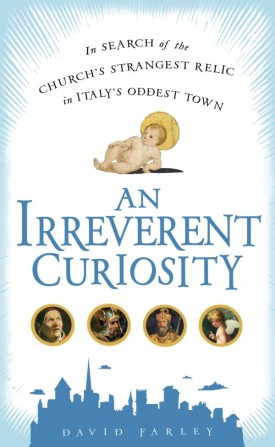
David Farley’s Quest to Find the Carna Vera Sacra — The Foreskin of Christ
By Luke Armstrong
We travel for different reasons. The sun and sand. Adventure. To discover something new. To leave something old behind. To conquer fears. To conquer mountains. To learn. To drink. To sober up. To experience other cultures. To find the foreskin of Christ?
In David Farley’s recently released book, An Irreverent Curiosity, that’s exactly what took him on a yearlong quest in Calcata, Italy. Before it became an excommunicable offense to talk about, this relic was a Church superstar. Early on, it attracted droves of faithful pilgrims, and then, controversy. The controversy eventually led to its mysterious disappearance in 1983, or as Farley’s research uncovers, was it really 1986?
The last known resting place of the relic, Calcata, Italy, is where Farley begins his quest for answers to the current whereabouts of the infamous relic. Despite a subject that could easily be a mockery slam-dunk, what the book is not, is irreverent towards the relic or its place in Church history. It’s as good as travel writing gets. A quest. A mystery. A well-researched exposé on eccentric Calcata, Church history and Italy that is easy to read and hard to put down.
If Indiana Jones could write well (I suspect he can’t), this book is in the vein of what he would be publishing. Intrepid travelers, take notes. Farley’s ability to open closed doors abroad is relevant to any foreigner finding frustration in a far-off land. Following is an interview with Farley about his search for the “Church’s strangest relic in Italy’s oddest town.”
 The Expeditioner: Your book is not just a travel book, but it’s a quest book, detailing your yearlong quest in Italy to find the holy prepuzio, or in layman’s terms, the holy foreskin of Jesus. How is questing for something different than just simply traveling somewhere?
The Expeditioner: Your book is not just a travel book, but it’s a quest book, detailing your yearlong quest in Italy to find the holy prepuzio, or in layman’s terms, the holy foreskin of Jesus. How is questing for something different than just simply traveling somewhere?
Farley: A lot of traveling consists of either aimless wandering or checking sites and experiences off a list, which isn’t a terrible thing, b ut putting yourself on a quest instantly makes you part of a story with a beginning, middle, and an end, creating a narrative arc and a resolution. Whether you choose to write about it is another story. It instills a bit more significance to one’s travels and takes the traveler to parts of the city/country/place that they would never think to visit.
The Expeditioner: Your title, An Irreverent Curiosity, made me assume that your book was not going to be extremely reverent towards the Church’s treatment of relics. Considering the subject matter — finding Jesus’ lost foreskin — as written by a former Catholic, it would not be difficult to take a mocking, sarcastic tone. Though the Church might not agree, I thought you wrote fairly and respectfully. At times it seems that you treat your quest to find the relic with the same reverence that was shown to it during the Middle Ages. Was this always your intentional when you decided to write about it? Basically, why is your book respectfully devoid of any penis jokes?
Farley: Thank you for pointing that out. I’ve done a lot of press — radio interviews and Q&A’s online — but almost none of it has been with Christian publications or radio shows. They read what it’s about and immediately think I’m making fun. The fact is, I didn’t have to make the obvious puns and jokes about the subject matter. One could view my book, from the first to last page, as an implicit dick joke. But that was never my intention. I respect history and the worldviews of the people that came before us and I wanted that to come through in the book. It fascinated me most of all that this relic, once a player in the spiritual landscape of medieval Europe, was now unknown and no longer appreciated.
 The Expeditioner: One of the things I liked the most about your saga to find . . . okay, I´m just going to say it . . . a preserved part of Jesus´ penis, was the uniqueness of your travel saga. Looking for Jesus’ foreskin is not something that Lonely Planet has on any top ten list. It’s certainly not something I know of anyone else doing. The twenty-first century is perhaps not the best century for the pioneering spirit. There are no new lands to discover, fewer virgin mountains to climb, and simply less things to discover. Let’s be real. Who hasn’t summited Everest? Who hasn’t flown solo around the world in a hot air balloon (yawn)? Were you intentionally looking for a something novel to travel for, to quest for, or did the foreskin unintentionally pick your interest?
The Expeditioner: One of the things I liked the most about your saga to find . . . okay, I´m just going to say it . . . a preserved part of Jesus´ penis, was the uniqueness of your travel saga. Looking for Jesus’ foreskin is not something that Lonely Planet has on any top ten list. It’s certainly not something I know of anyone else doing. The twenty-first century is perhaps not the best century for the pioneering spirit. There are no new lands to discover, fewer virgin mountains to climb, and simply less things to discover. Let’s be real. Who hasn’t summited Everest? Who hasn’t flown solo around the world in a hot air balloon (yawn)? Were you intentionally looking for a something novel to travel for, to quest for, or did the foreskin unintentionally pick your interest?
Farley: You mean, it’s not on any Lonely Planet lists . . . yet. No, in all seriousness, what attracted me to such a bizarre idea was the fact that we are in the twenty-first century and this long-time aspect of western spirituality — relic veneration — is slowly, quietly dying. I’m interested in the history of spirituality but I’m more interested in documenting aspects of world culture that are not surviving modernism. So this was less of a literal exploration than a documenting of a piece of history that has almost been lost to us.
The Expeditioner: After reading your book, I’ve decided that there is not enough “questing” going on today. Do you agree? What can run of the mill travelers do to become intrepid questers?
Farley: I agree. I’d start with figuring out where your interests lie. Then arrive in a city and let those interests guide you. If you’re in Tokyo, put yourself on a quest to find, say, the most unusual sushi or some food you can’t get back home, like fugu (the potentially lethal blow fish). Or just pick some random thing—creepy vintage ventriloquist dummies, for example—and try to find one. You’ll end up in some interesting off-the-radar places and meeting interesting people. In a way, it’s a travel enhancer. Cialis for travel.
The Expeditioner: The Vatican certainly did not go out of their way to help you on your quest. Complete dismissal of anything to do with you and your mission seems a good way to describe their presence. Have you received any feedback, positive or negative, from anyone in the Church about your book?
Farley: Like their policy on the Holy Foreskin itself, the Church’s reaction to my book has been silence.
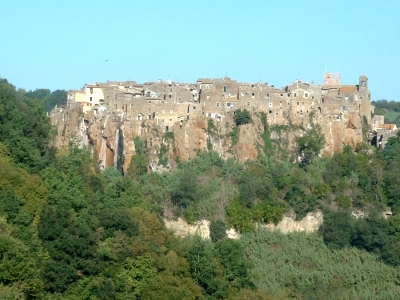 The Expeditioner: Travel writer critic Edward Marriot thinks that we have “reached the moment when travel writing [cannot] go any further.” He goes on to say that “[w]ith many young writers of travel turning to history, biography or fiction, the genre has never felt so redundant.” What do you make of Marriot´s comments? Has travel writing really reached a critical mass?
The Expeditioner: Travel writer critic Edward Marriot thinks that we have “reached the moment when travel writing [cannot] go any further.” He goes on to say that “[w]ith many young writers of travel turning to history, biography or fiction, the genre has never felt so redundant.” What do you make of Marriot´s comments? Has travel writing really reached a critical mass?
Farley: Nah, travel writing will always be around. Like anything that sustains itself, the genre will change with the times and could look very different in a few decades. That said, the further technology may take us off the road or out of nature, I can very much imagine travel writing entering a retro phase, with writers doing things the “old” way, like getting on train and writing about the journey. But these days, in this age of diminishing attention spans, documenting long journeys hardly captures the interest of readers. So, in my humble opinion, travel books should have an extra hook to them, something that will transcend the travel genre.
The Expeditioner: You spent a year living in Calcata. What’s the difference between living long term in a place, and learning the language as opposed to quick trips.?
Farley: I’ve also lived in Rome, Prague, and Paris and besides the obvious—making new friends, learning the language, knowing your way around—you can really get underneath the place and understand how it ticks, how the culture affects quotidian activities. Traveling this way is a gift we give ourselves that no one will ever be able to take that away from us afterward.

About the Author
 Luke Maguire Armstrong lives in Guatemala directing the humanitarian aid organization, Nuestros Ahijados. His book of poetry, iPoems for the Dolphins to Click Home About (available for sale on Amazon.com) is especially enjoyed by people who “don’t read poetry.” (@lukespartacus)
Luke Maguire Armstrong lives in Guatemala directing the humanitarian aid organization, Nuestros Ahijados. His book of poetry, iPoems for the Dolphins to Click Home About (available for sale on Amazon.com) is especially enjoyed by people who “don’t read poetry.” (@lukespartacus)
The post Q&A: An Irreverent Interview With David Farley appeared first on The Expeditioner Travel Site.
]]>The post Is Thomas Kohnstamm Going To Hell? A Travel Writer’s Real Take On Travel Writing appeared first on The Expeditioner Travel Site.
]]>
An interview with travel writer and author Thomas Kohnstamm
According to his website bio, Thomas Kohnstamm is a “writer, traveler and seeker of all that is odd, adventurous and ridiculous.” In his first book, Do Travel Writers Go To Hell, he takes readers through a healthy fixing of ridiculousness as he embarks on a debaucherous journey through Brazil as a Lonely Planet writer.
Before opening the book, I thought it would be akin to a Do They Serve Beer in Hell for travelers — a fun, shallow read. What you´ll find is more. The book is fun. It is ridiculous. It is, as the cover proclaims it to be, “A Swashbuckling Tale of High Adventure, Questionable Ethics & Professional Hedonism.” But under the surface of all the fun, Kohnstamm offers a philosophical depth and commentary on traveling, travel writing and the drive that draws people to the road. The characters he describes are real, and for everyone who has spent time in hostels, they are all people we have met. Likewise, the questions he raises: “What am I doing and why?”, are questions travelers grapple with frequently.
All this makes Do Travel Writers Go To Hell not just an enjoyable read, but an important read that will likely stand the test of time and weigh down traveler´s packs from Brazil to Botswana.
Continue reading TheExpeditioner.com´s exclusive interview Author Thomas Kohnstamm as he relates his experience as a travel writer and admits his unhealthy obsession with Scary Spice.
The Expeditioner: I was going to start by asking you what your favorite country and color is, but since my editor requested that I not ask any “lame” questions, why don´t we just start with: What is the most unquestionably immoral, sexually perverse, and ethically astonishing thing you have ever seen in your travels?
Kohnstamm: Brazil and the color green, but moving on . . . prior to becoming a travel writer I worked for a law firm on Wall Street where I saw immoral and ethically astonishing things that made everything from my travels pale in comparison. As for sexual perversion, the sex tourism in Northeastern Brazil and in Cuba ranges from creepy to tragic.
The Expeditioner: Your book takes the halo off guidebook writers (and in your case the most revered of all guidebook writers, the mythical Lonely Planet writer). Something I took away from the book was: the only difference between guide book writers and travelers is that after a night of partying the guide book writer needs to turn on his laptop to make some sense out of their previous day of chaotic debauchery. Did you get any negative backlash from Lonely Planet editors when the book came out?
Kohnstamm: There in is the conundrum of the guidebook writer in a place like Northeastern Brazil, where you are covering lots of beach party towns in a hedonistic environment. You can be a dispassionate observer, running around, taking notes about night life and not really understanding what’s going on . . . or you can immerse yourself in the culture and come up with some deeper insights, but you must then walk that fine line between business and pleasure. I am sure that it would be less of an issue if you were covering museums in Italy or castles in the UK.
I got plenty of backlash from Lonely Planet including a campaign to make me look like a terrible person and a threatened law suit. They’re not really open to criticism.
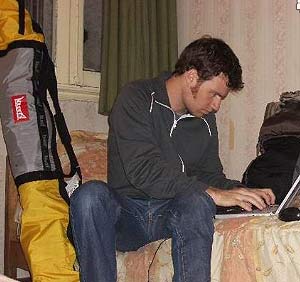
The Expeditioner: Why do you think guide books so often contract-out writers who are just passing through a place for a short period of time, instead of finding a local or expat who has spent a considerable number of years getting to know a place? What are the advantages of outsiders writing insider´s hints and tips?
Kohnstamm: We could discuss this for a while as there are a few different issues at play. I’ll try to keep this short though.
1): The guidebook publisher can save money and time by contracting someone to cover many different places. It takes a while to learn how to write in a company’s style and to learn all of the formatting stuff. So, once a writer is up and running and fulfilling the company’s needs, they want to use them as frequently as possible. Searching out and training new writers is a huge time suck. Managing hundreds of writers for hundreds of destinations would be practically impossible. There is always user-generated content, but it comes with a loss of editorial standards.
2) An outside writer tends to be more independent. A local or expat will have many ties to local business and will recommend businesses that compromise their content.
3): It is often good to have the outsider perspective as the audience for the guidebook is 100% outsiders. I am from Seattle and while I can give you a lot of insight on Seattle culture, I don’t know shit about hotels in town and public transportation from the airport, etc. . . I also have a very calcified view of how my city is and how it works (much of it formed during my teenage years). Maybe it is best from someone else to write the Seattle guide and pick my brain for detail when needed.
The Expeditioner: Travel writer critic Edward Marriot thinks that we have “reached the moment when travel writing [cannot] go any further.” He goes on to say that “[w]ith many young writers of travel turning to history, biography or fiction, the genre has never felt so redundant.” What do you make of Marriot´s comments? Has travel writing really reached a critical mass? Is all travel writing the same surface with different paint? (Man arrives in new place. Man is taken aback by strange customs. Man comes to grips and is inspired by these new things and writes about the experience.)
Kohnstamm: There is a lot of lame travel writing out there, but there is always good stuff too. If you look at travel writing as writing with a focus on place, then I think that it is really limitless. Sure, big book publishers are afraid to take a risk to publish something that isn’t similar to a past success and, therefore, they narrow the genre. But, overall, I disagree with Marriot and think that he’s really being more provocative than genuine.

The Expeditioner: From your book, it’s a given that you have traveled extensively. But you did not start off writing about these travels. Do you bring a different mentality to a place when you know that you are going to have to write about it?
Kohnstamm: I much prefer to travel when you don’t plan to write about it. Writing — especially reporting-based writing — is essentially work (even if it is creative work) and distorts how you can relate to your actual experience while in a given place. In my book, I say that it must be a bit like the difference between having sex and working in porn. Both are enjoyable, but going pro eventually perverts and corrupts your original interest in the subject.
I like the point where I am at now: I travel and garner different experiences and write about them at a later time if the experience or character inspires me or serves my writing needs.
The Expeditioner: Your book begins when travel becomes an escape from a mundane routine of a modern life. Do you foresee a time when you escape from escaping? A time when you will that you have had enough, and all you want now is to sleep on the same bed every night?
Kohnstamm: It has already happened. I am now married and live in Seattle and have two dogs. I hit a point where I was fantasizing about not having to dig through a backpack to find my toothbrush at night. I could envision opening a mirrored cabinet in the bathroom and finding my toothbrush ready-to-go behind it.
I still travel a lot, but I do it more on my own terms. My wife is from Rio and now I return as part of a sprawling Brazilian family rather than an outside observer. Marrying into a culture is a strange pinnacle of interaction. All of these travelers and travel writers think they’re so “extreme” because they visited this place or that place or ate this or bungee jumped off that, but — in my experience — there is nothing more challenging than truly learning language and culture to the point that you can have a genuine relationship with your mother- and father-in-law. That is some crazy shit . . . trust me.
The Expeditioner: Is there another book in the works for you?
Kohnstamm: I am busy working on screenwriting right now, but have other books in the works.
The Expeditioner: And finally and most importantly, if you were stranded on a desert Island and could only take one Spice Girl, which would you take?
Kohnstamm: Oh man, Spice Girls? Really? What is this, 1995? If I really have to take a Spice Girl, I’d say Scary Spice (pre-Eddie Murphy fiasco). Thanks for not asking Britney or Christina Aguilera, at least.

About the Author
 Luke Maguire Armstrong lives in Guatemala directing the humanitarian aid organization, Nuestros Ahijados. His book of poetry, iPoems for the Dolphins to Click Home About (available for sale on Amazon.com) is especially enjoyed by people who “don’t read poetry.” (@lukespartacus)
Luke Maguire Armstrong lives in Guatemala directing the humanitarian aid organization, Nuestros Ahijados. His book of poetry, iPoems for the Dolphins to Click Home About (available for sale on Amazon.com) is especially enjoyed by people who “don’t read poetry.” (@lukespartacus)
The post Is Thomas Kohnstamm Going To Hell? A Travel Writer’s Real Take On Travel Writing appeared first on The Expeditioner Travel Site.
]]>